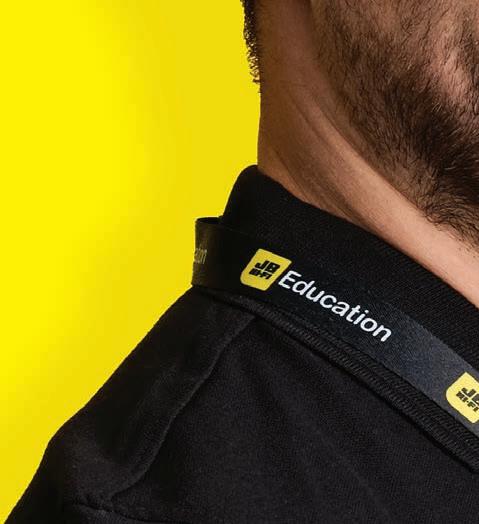












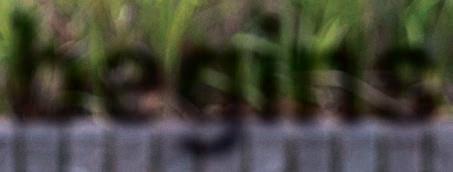
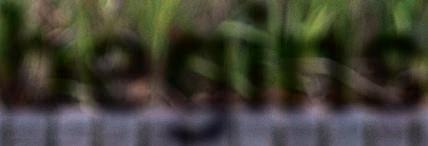











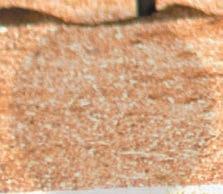
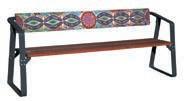

























































When loo bac on my own final years of school, the message was simple go to university or choose a trade. ast forward to today, and that thin ing feels out of step with reality.

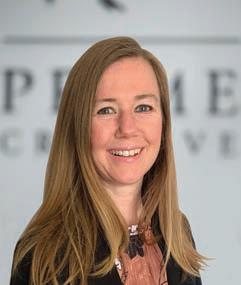
Our young people deserve better than a single definition of success. hey need guidance that recognises the full spectrum of opportunities university, A E, apprenticeships, E programs, Os and micro-credentials. hey need reassurance that their passions and strengths can translate into meaningful futures, whether that future is in a hospital ward, a wor shop, a tech company, or a classroom.
n this issue, we explore how governments, schools and industry are wor ing together to broaden those opportunities. W inister for ills, A E and ertiary Education, r teve Whan, points to programs li e the Educational Pathways Program and egional ndustry Education Partnerships, which connect students with employers and training while they are still at school. imilar initiatives are ta ing shape across other states, re ecting a national shift success is not one-si e-fits-all. or secondary schools, this is both a challenge and an opportunity. he challenge lies in ma ing sense of a complex landscape, where new qualifications and training options are emerging at pace. he opportunity is to inspire students early, give them access to real-world experiences, and help families see the value in pathways beyond the A A . areers advisors remain central to this wor . et their role has too often been stretched thin. trengthening their capacity and supporting principals to place pathways high on the agenda will be critical if we are to prepare every student for what comes next. o, what can schools do now he following actions are not exhaustive, but they are achievable starting points
Chief Executive Officer: Christine Clancy christine.clancy@primecreative.com.au
Publisher: Sarah Baker sarah.baker@primecreative.com.au
Managing Editor: Myles Hume myles.hume@primecreative.com.au
Editor: Rhiannon Bowman rhiannon.bowman@primecreative.com.au
Art Director: Michelle Weston
Media Bookings and Advertising: Kylie Nothrop kylie.nothrop@primecreative.com.au 0422 046 299
Client Success Manager: Sabrina Zor
• tart the conversation earlier. Embed career and pathway discussions in ears and , not ust ear .
• everage local industry. uild partnerships with businesses and community organisations to create authentic wor -based learning opportunities.
• upport careers advisors. Protect their time, prioritise their role, and connect them to professional learning and networ s.

• ighlight diversity of options. howcase stories of former students who pursued trades, A E, or digital training, alongside those who went to university.
• Engage parents. Ensure families understand vocational and training pathways as valid, respected options.
• rac and celebrate pathways. onitor where students go after school and share successes broadly within the community. he landscape of further education is shifting, and that shift is exciting. y embracing multiple pathways, we can help every student imagine and achieve a future that fits.
appy reading
Rhiannon Bowman
Editor Education Matters
rhiannon.bowman primecreative.com.au
Education Matters is a division of Prime Creative Media Pty. Ltd. 379 Docklands Dr, Docklands, VIC Ph: (+61 3) 9690 8766
Subscriptions
Education Matters is available by subscription from the publisher. The rights of refusal are reserved by the publisher. Ph: (+61 3) 9690 8766 E: subscriptions@primecreative.com.au
Articles
All articles submitted for publication become the property of the publisher. We reserve the right to adjust any article to conform with the magazine format.
Cover Image Camberwell High School
Copyright




www.educationmattersmag.com.au
www.educationmattersmag.com.au/subscribe/
Education Matters is owned by Prime Creative Media Pty. Ltd. and published by John Murphy. All material in Education Matters is copyright and no part may be reproduced or copied in any form or by any means (graphic, electronic, or mechanical including information retrieval systems) without the written permission of the publisher. The Editor welcomes contributions but reserves the right to accept or reject any material. While every effort has been made to ensure the accuracy of information, Prime Creative Media will not accept responsibility for errors or omissions or for any consequenses arising from information published. The opinions of the magazine are not necessarily the opinions of, or endorsed by the publisher unless otherwise stated. All photographs of schools (including students) depicted in feature articles and advertisements throughout this magazine have been supplied to the publisher (and approved) by the contributing school. All material supplied by schools is done so with the understanding that such images will be published in Education Matters and may also appear on the our website: www.edumatters.com.au.
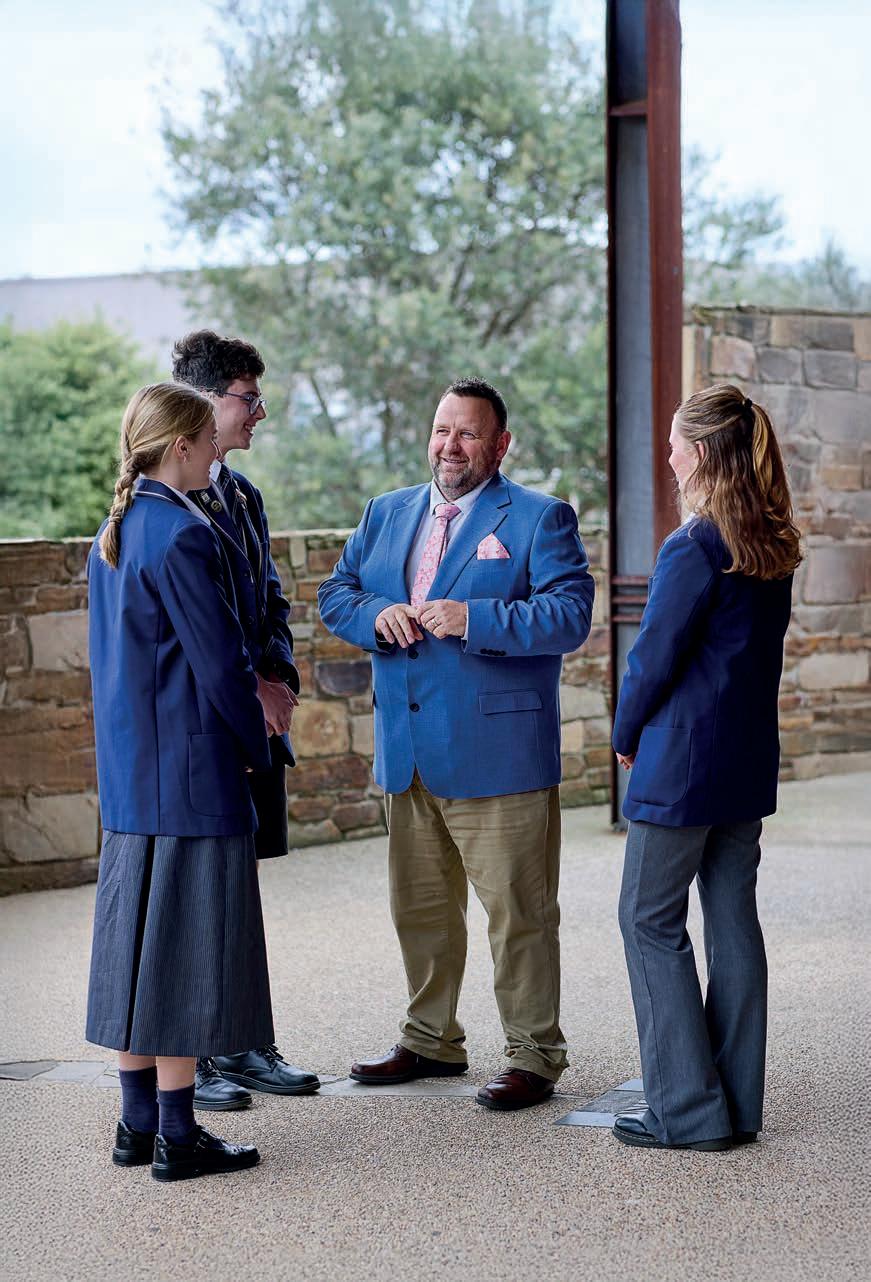
34 a i atin t ene t a e As universities embrace AI, tomorrow’s school leavers will enter a sector rich with personalised study.
36 ea lesslearnin at in is arne Discover how the school implemented the Apple ecosystem with the support of JB Hi-Fi Education.
38 te an s are Educators are invited to submit proposals to present at the 2026 National Education Summit. 40 essonsinlea
i A Cambridge sabbatical

Rochedale State High School’s Ms Cassie Day has been recognised as an Outstanding Teacher of STEM.
46 arin to lea i erentl
Educator Ms Katrina Dunne shares how the Dare to be a Rockstar program empowered her leadership.
47 a e a seat n erco er Felton Industries’ new sheltered grandstands deliver safer, more customisable spectator seating.
48 ert ontrib tors
Dr Stephen Brown, Andrew Murray and Brett Salakas share their views on leadership, wellbeing, and AI.
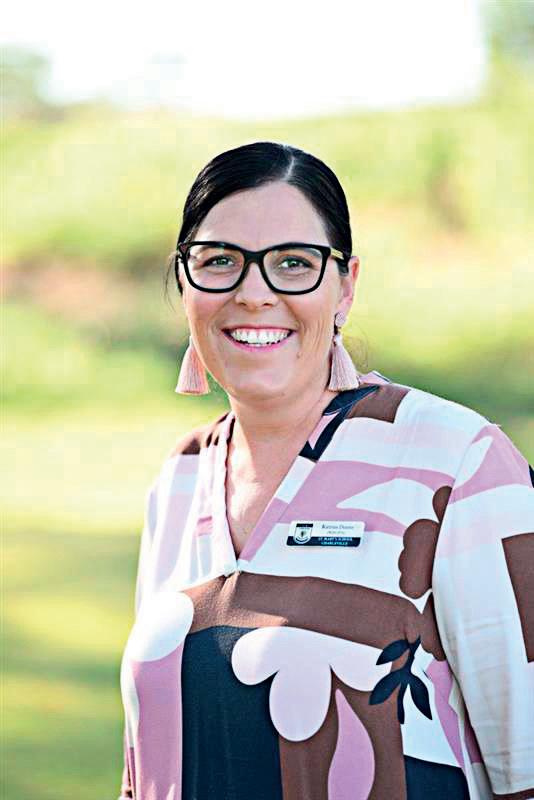
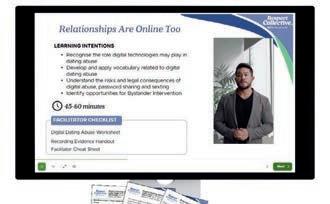


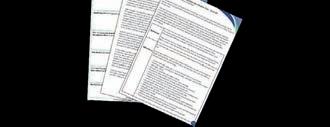


“These new studies shed light on how phone bans are influencing young people in South Australia, both in terms of mental health outcomes and students’
lived experiences.”
Professor of Psychology
Dan King
Following wider acceptance of school phone bans and taking ‘digital breaks’, South Australian experts have produced more evidence of the potential benefits to student wellbeing, mental health outcomes and their overall lived experience.
New research by Flinders University and international experts focused on school students’ feedback before and after mobile phone bans were introduced in South Australia in June 2023, as well as in-depth follow-up insights from hundreds of students on the mobile phone ban.
“Together, the two studies highlight that phone-free schools seem to provide students with a valuable ‘digital break’ that supports both mental health and learning,” says research fellow and clinical psychologist, Dr Marcela Radunz, from the College of Education, Psychology and Social Work at Flinders University.
he findings also reaffirm that while bans can be a cost-effective tool, they should be paired with broader strategies, including digital literacy and mental health programs, to prepare young people for life in an increasingly digital world.”
The latest study published in Computers in Human Behavior highlights a range of positive responses among wide-ranging student feedback, taken from about 7,000 open-ended survey answers completed by more than , students, from five A schools. These include:
• Stronger social connections – more face-to-face interaction, better quality conversations, and greater awareness of peers and their surroundings.
• Improved classroom focus – less distraction, greater engagement in learning, and reports of higher grades, with teachers also spending less time managing phones.
• Better health and safety – reduced screen time, more exercise, improved mood, and less cyberbullying and con ict. any students described their schools as happier, friendlier, and safer environments since the ban.
As one student put it: “Ever since we have had the phone ban, we have no fights. People are making more friends and are socialising and playing more sports during break.”
The earlier study compared student mental health between schools with and without bans, before and after SA’s statewide ban was introduced.
The results showed a clear link between phone bans and lower levels of psychological distress, including reduced symptoms of anxiety and depression. Students also reported fewer negative effects tied to problematic phone use, such as fear of missing out, risky behaviour, and social comparison.
Professor of Psychology Dan King, senior author of the studies, adds: “Although improvements were modest, research is supporting the idea that even small reductions in psychological distress could have important public health implications if implemented at a large scale.”
Smartphone ownership among young people has skyrocketed in recent decades, with ownership exceeding 90 per cent in many countries. As phones become an everyday part of adolescent life, there are growing concerns about their impact on mental health.
There is a growing body of research showing that excessive smartphone use can negatively impact wellbeing, contributing to increased anxiety, depression and stress among adolescents.
In response, many countries, including Australia, have introduced mobile phone bans across schools in an effort to reduce potential harms and support student wellbeing. However, until recently, evidence of their effectiveness has been limited and mixed.
“These new studies shed light on how phone bans are in uencing young people in South Australia, both in terms of mental health outcomes and students’ lived experiences,” says Professor King, also from Flinders University’s College of Education, Psychology and Social Work. EM





“This year’s Teaching Fellows represent a new wave of leaders embracing the future of education – from leveraging technology to strengthening cultural connections.”
Twelve exceptional teachers and school leaders from across Australia have been recognised for their transformative impact on student learning and wellbeing at the 2025 Schools Plus Teaching Awards, supported by Commonwealth Bank.
Now in its ninth year, the awards are among the nation’s most prestigious honours in education, celebrating educators whose innovative practices and leadership are shaping brighter futures, particularly for students in disadvantaged communities.
Hosted at Parliament House in Canberra on 3 September and co-hosted by Education Minister Mr Jason Clare, the event highlighted the vital role educators play in driving equity and excellence. Each recipient received a $20,000 prize, including funding to design a high-impact school program and a place in a year-long Teaching Fellowship.
“These Awards are about more than individual excellence – they spotlight the innovative approaches reshaping education to ensure every child in Australia has the opportunity to thrive,” said Ms Sherrill Nixon, CEO of Schools Plus.
This year’s winners stood out for their commitment to equity and inclusion, datainformed practical innovation, deep community connection, and tangible student impact. From remote Aboriginal communities to urban schools, these educators are creating new pathways for literacy, numeracy, and STEM learning – especially for children and young people in under-resourced communities.
“This year’s Teaching Fellows represent a new wave of leaders embracing the future of education – from leveraging technology to strengthening cultural connections,” Ms ixon said.

The 2025 Schools Plus Teaching Award recipients are:
•Colleen O’Rourke, The Hills Community Christian School, SA (Peramangk)
Emma Davis, Parnngurr Community School, WA (Martu)
•Holly Wedd, Orara High School, NSW (Gumbaynggirr)
•Jade Bassett, Rutherford Technology High School, NSW (Wonnarua)
•Kim Brady, novo Education Space, NSW (Dharawal)
•Kristie De Brenni, Queensland Pathways State College, QLD (Kalkadoon, Bindal, Wulgurukaba, Jarowair, Giabal, Wakka, Ugarapul, Yuggera, Turrbal, Kabi Kabi)
•Lisa Holt, Rosebud Secondary College, VIC (Boon Wurrung/Bunurong)
•Michael Ha, Toogoolawa School, QLD (Yugambeh)
•Rachel Byrne, Hunter Sports High School, NSW (Awabakal)
•Russ Taunton, Corrimal High School, NSW (Dharawal)
•Teresa Maiolo, Avenues College, SA (Kaurna)
•Tina Coumbe, Crib Point Primary School, VIC (Boon Wurrung) EM
The Queensland Government has awarded contracts for a $104 million investment that will deliver modern, fit-for-purpose learning environments for schools in Cairns, Brisbane and the Gold Coast.
Cairns State Special School will benefit from a million investment to deliver a new classroom block featuring eight classrooms, an outdoor learning space and improved accessibility for staff and students.
On the Gold Coast, $35.88 million will fund a new general learning building at Coomera State Special School, creating 14 classrooms and ancillary spaces to support the growing school community.
In South-West Brisbane, Pallara State School will receive $42.33 million to establish a dedicated Prep to Year 1 campus, including 22 new classrooms, and refurbishments to existing facilities.
Middle Park State School will see the construction of a new two-storey building, featuring a music and ensemble room, a STEM/Science Flexible Learning Area, five general learning areas, and outdoor learning spaces. The $11 million project will also remove demountable buildings, ensuring students and staff have access to modern facilities in the future.
Minister for Education Mr JohnPaul Langbroek said the Queensland Government is committed to providing students with the learning environments they need to remain engaged and thrive in their education.
“From Cairns to Coomera we’re delivering the infrastructure needed to meet the needs of growing school communities across Queensland,” Mr Langbroek said.
“By investing in these projects, we’re
The program is designed to cultivate a sense of contentment in the workplace, following the four pillars of the program: Rest, Play, Create and Innovate.
Download your toolkit strategy about ‘Play’ for free here.
not just building classrooms – we’re creating spaces where students can thrive, teachers can inspire, and communities can come together.
Mr Langbroek said the government is delivering 15 new schools in the record $21.9 billion Education Budget, including new primary schools in Caloundra South and Ripley Valley, and six special schools to provide choice to parents and help all students reach their potential.
Cairns State Special School Principal Ms Alicia Smith said the school community was looking forward to welcoming families who will choose the school because of its individualised and targeted support for students.
“The most exciting part is being able to provide the specialised facilities that support students’ education and health needs,” Ms Smith said. EM
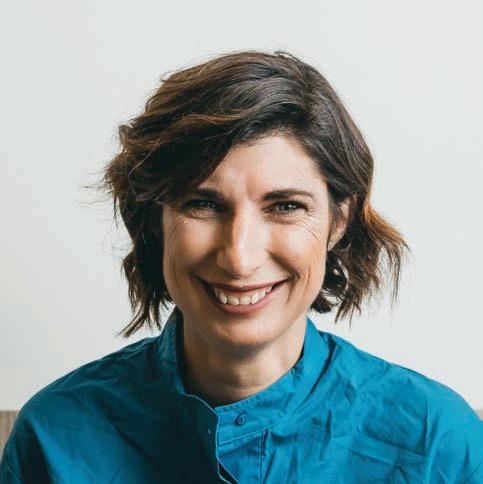
Peta Jeppesen Founder, Beyond the Classroom Australia
“Our children deserve the very best education possible. We have been very clear that graduate teachers who want to teach in Victoria should have credentials achieved under a nationally consistent accredited course, no matter where they study.”
The Victorian Government is banning teachers with interstate one-year degrees from teaching in Victorian government schools.
Deputy Premier and Minister for Education
Ben Carroll announced changes to Victoria’s teacher recruitment policy in September, preventing teachers from Western Australia from working in government schools unless they have completed a postgraduate initial teacher education degree of at least two years’ duration.
One-year Graduate Diplomas in Education which are acquired in Western Australia do not meet the nationally agreed Australian Institute for Teaching and School Leadership (AITSL) accreditation of initial teacher education programs in Australia.
AITSL’s nationally agreed standard requires postgraduate initial teacher education (ITE) programs to be two years (full-time equivalent) in length and the incorporation of ITE core content into programs.
The Western Australian decision undermines Victoria and other states and territories due to the operation of mutual recognition laws. Under mutual recognition, the Victorian Institute of Teaching is required
While Western Australian teachers are still eligible to be registered, Victoria has the authority to prevent them from being employed in Victorian government schools through changes to the school employment policy.
“Our children deserve the very best education possible. We have been very clear that graduate teachers who want to teach in Victoria should have credentials achieved under a nationally consistent accredited course, no matter where they study,” Mr arroll said.
“The investments we’ve made in boosting our teacher workforce are working – we have around 12,000 more teachers registered now than there were in 2020 and we’re continuing to back them with the resources they need to do an excellent job.”
The Victorian Government has written to the Victoria Catholic Education Authority and Independent Schools Victoria to encourage them to review their own employment policies to prevent the undermining of nationally consistent standards of initial teacher education programs and graduates.
It also continues to advocate to the

A major win for small schools is on the horizon, with the NSW Department of Education announcing a permanent increase in release time for teaching principals – a move hailed as a vital improvement for learning conditions.
From Term 1, 2026, all infants and primary schools with fewer than 160 enrolments and a teaching principal will receive a permanent staffing entitlement for principal release time. The allocation will range between 0.3 and 0.4 fulltime equivalent (FTE), depending on school si e.
This change replaces the previous system of exible funding for casual release days, ensuring more permanent teachers are employed and safeguarding the $10 million investment secured in 2018, which nearly doubled release time
for teaching principals.
In a further boost, seven isolated one-teacher schools (with fewer than 26 students) will gain an additional full-time teacher, achieved by bundling existing fractional entitlements and injecting extra funds.
The announcement follows a grassroots campaign led by the NSW Teachers Federation, triggered by a motion from small school teachers and passed by the Hawkesbury Teachers Association. The campaign called for an immediate increase in guaranteed release time for teaching principals, who juggle leadership responsibilities with classroom teaching.
Members responded strongly, sending hundreds of emails to Premier Chris Minns and Education Minister
Prue ar, demanding reforms to re ect the unique challenges of small schools. Their key asks included:
• A base staffing entitlement of two full-time teachers as a minimum.
•A 50 per cent reduction in face-toface teaching for teaching principals, regardless of enrolments.
While the announcement marks a historic improvement and a shift away from what the NSW Teachers ederation described as a awed’ Local Schools, Local Decisions policy, the ederation says the fight continues to fully implement its small schools staffing policy.
his is a significant step forward, the Federation stated, “but we will keep building momentum to ensure every small school has the staffing it needs. EM
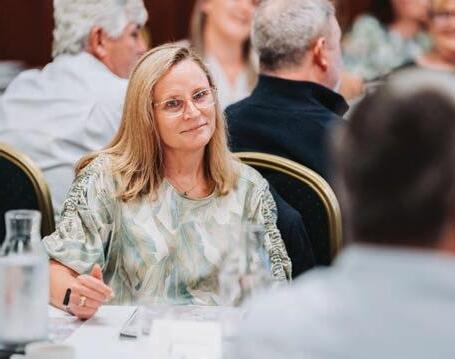
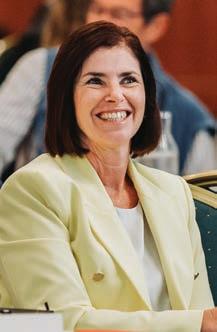
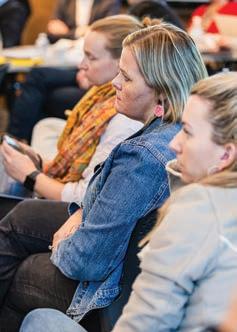

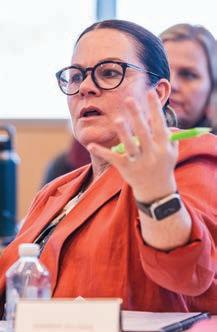

Program delivery model & dates are as follows: Face-to-face modules held at Lourdes Hill College, QLD
Module 1: Governance
Wednesday 25 & Thursday 26 February 2026
Module 2: Ethics
Friday 27 February 2026
Module 3: Thinking Strategically | Online
Including two webinars & self-paced learning
Module 4: Responsible Stewardship
Wednesday 6 May 2026
Module 5: Creating a Culture of Safety & Wellbeing Thursday 7 May 2026
Module 6: Creating a Culture of Performance Friday 8 May 2026
For more information, email helen@thebrowncollective.com.au or visit www.thebrowncollective.com.au
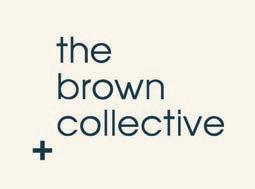
Mr Andy Mison, President of the Australian Secondary Principals' Association, explains why teacher and leader wellbeing must drive workforce reform.
Australia's teaching profession stands at a critical juncture. Recent government initiatives have shown promise in addressing recruitment challenges, but the fundamental issues of educator workload, wellbeing, and professional standing remain largely unresolved. As we approach the National Teacher Workforce Roundtable on 19 September as I write this, sustainable solutions must emerge from the profession itself, not be imposed upon it.
The latest Australian Teacher Workforce Data reveals the depth of our challenges. Only 26 per cent of teachers intend to remain in the profession until retirement, with 39 per cent planning to leave before retirement age (AITSL, 2025). More concerning, the proportion intending to leave within five years increased by eight percentage points to 14 per cent from 2021 to 2023. When asked about their motivations, the responses are consistent: 75 per cent cite workload pressures, 69 per cent identify work-life balance concerns, and 68 per cent report work-related stress as primary factors in uencing their departure intentions.
hese figures represent the lived reality of educators working a median 50 hours per week during term time, with approximately 25 hours weekly dedicated to non-teaching tasks, and struggling to maintain balance between professional commitment and personal wellbeing (AITSL, 2025). For school leaders, the pressures are acute, with middle leaders reporting median working weeks of 50 hours and senior leaders 55 hours, alongside increasing administrative burdens that distance them from educational leadership.
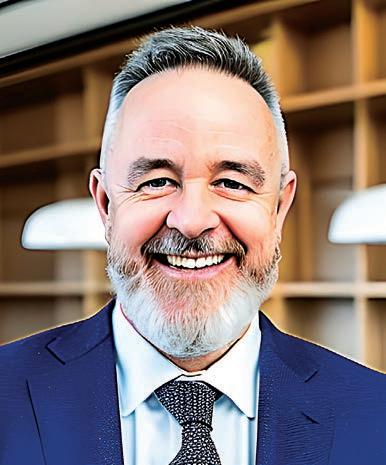
“Education policy is too often developed by those removed from classroom realities, resulting in initiatives that sound promising in theory but prove unworkable in practice.”
Mr Andy Mison, ASPA
More concerning still, the 2024 Australian Principal Occupational Health, Safety and Wellbeing Survey reveals 67 per cent of secondary school leaders experienced threats of violence and 60 per cent faced physical violence, whilst 54 per cent triggered red- ag indicators for psychosocial risk (Australian Catholic University, 2024). When those charged with leading our schools face such extreme working conditions and safety concerns, the sustainability of the entire education system is called into question.
The 2022 National Teacher Workforce Action Plan (NTWAP) has yielded some early progress. Federal Education Minister Jason Clare has reported significant increases in teacher education applications, with universities recording their highest enrolments in teaching courses for over a decade. The government's scholarship programme, offering $40,000 to undergraduate teaching students and $20,000 to postgraduates, has attracted strong interest with over 5,000 recipients committed to teaching in public schools.
he WAP s five priority areas contain promising initiatives. The Workload Reduction Fund is supporting projects across jurisdictions, including Queensland's $1.9 million pilot employing specialist staff to reduce administrative burdens. The ‘Be That Teacher’ media campaign successfully contributed to increased teacher education enrolments, but should become an ongoing mainstream media campaign that builds esteem and respect for the profession more broadly rather than a time-limited initiative.
These measures, whilst welcome, address symptoms rather than systemic causes. The teaching profession has endured decades of externally imposed reforms, accountability measures, and topdown mandates that have failed to improve student outcomes whilst demoralising the workforce. We must reverse this approach and place professional educator expertise at the centre of education policy development. eaningful reform requires

fundamental shifts in how we conceptualise teaching as a profession. International evidence from highperforming systems like Finland and Singapore demonstrates that teacher professional autonomy, competitive compensation, and genuine career progression opportunities are prerequisites for wor force sustainability. In these systems, teachers are trusted as educational experts, granted time for collaboration and curriculum development, and provided with career pathways that allow advancement without leaving the classroom.
Australia must move beyond piecemeal interventions towards comprehensive transformation. This includes achieving salary agreements for educators across the country commensurate with the requirements of the ob in the current climate. t requires adequate administrative systems and supports for school leaders. t requires reducing face-to-face teaching hours to OECD averages, providing dedicated time for planning and professional development, and eliminating punitive accountability measures that undermine professional judgement.
The profession itself must be meaningfully involved in designing these solutions. Education policy is too often developed by those removed from classroom realities, resulting in initiatives that sound promising in theory but prove unworkable in practice. Teachers and school leaders possess the professional knowledge and practical experience essential for effective reform design.
Professional associations representing educators require adequate resourcing to engage effectively in policy development processes. Currently, these organisations operate with limited capacity to conduct research, develop positions, and participate fully in complex policy environments. Investing in professional association capability would strengthen policy advice quality and ensure educator voices are heard in decision-making forums.
The upcoming National Teacher Workforce Roundtable presents an opportunity for systemic reform. As I write this, I will be attending Parliament House on 19 September representing Australia's public secondary school principals alongside colleagues from
the National Principals' Reference Group, including representatives from public primary, independent, Catholic, Aboriginal and Torres Strait Islander, and special education sectors. We speak with one voice about the urgency of addressing educator workload, wellbeing, and professional standing through comprehensive, professionled reform.
he path forward requires moving beyond incremental adjustments towards fundamental transformation of how we prepare, support, and value our educators. This means trusting teachers as professionals, providing working conditions and compensation that re ect the complexity and importance of their work, and creating systems that prioritise educator wellbeing alongside student outcomes.
Educator agency and wellbeing form the foundation for improved learning and wellbeing outcomes for our children and young people. No education system can succeed when its teachers and leaders are overworked, undervalued, and leaving the profession in unprecedented numbers. The time for meaningful, profession-led reform is now. EM
In addition to the highest NAPLAN participation rates recorded since 2017, results show stronger numeracy results in Years 7 and 9, and steady national performance overall.
With Term 4 now underway, it’s been a full and demanding year to date for schools, with teachers and principals guiding students through assessments, assignments and learning milestones.
Students in Years 7 and 9 should now have received their personal 2025 NAPLAN results in the form of Individual Student Reports (ISRs). These provide a concise picture of performance in reading, writing, conventions of language (spelling, grammar and punctuation), and numeracy, aligned to national proficiency standards. sed alongside classroom assessment and teacher judgment, the reports support meaningful discussions about progress and targeted interventions.
Alongside individual results, ACARA has released the national data, including state and territory breakdowns, student background, gender, language background other than English, location, and participation trends.
The overall national picture in 2025 remains broadly consistent with 2024 and 2023. Encouragingly, early indicators suggest improvements in key areas, while also underlining where continued attention is required
Across all year levels, about twothirds of students achieved at ‘Strong’ or Exceeding’ proficiency. Around one in were identified as eeds additional support’, reinforcing the importance of sustained intervention strategies, especially for literacy and numeracy.
Notably, numeracy results showed
improvements in Years 5, 7 and 9, with more students reaching the ‘Exceeding’ level. While the percentage increase seems modest, it equates to more than 20,000 additional students achieving at the highest level compared with last year.
Demographic patterns remained steady. Writing outcomes were stronger among girls across all year groups, with more achieving ‘Strong’ or ‘Exceeding’, while boys outperformed girls in numeracy, particularly in higher achievement bands.
Equity remains a key concern. Regional and remote students, those from disadvantaged backgrounds, and Indigenous learners continue to face systemic challenges. Encouragingly, since 2023 there has been an increase in Indigenous students in Years 7 and 9 achieving at ‘Exceeding’ levels in writing and numeracy – a promising development for secondary schools.
Nationally, around one in three ndigenous students were identified as needing additional support in reading and numeracy, compared with fewer than one in 10 non-Indigenous peers. Students in very remote areas achieved, on average, at lower proficiency levels than those in major cities, highlighting ongoing gaps that require targeted resourcing and leadership focus.
Participation in NAPLAN 2025 was a standout. Nationally, 93.8 per cent of students sat the assessments – the highest since 2017. Secondary participation reached 92.4 per cent, while primary rates were slightly higher. or schools, this confirms strong
engagement with the assessment process and growing confidence in its value as a diagnostic tool.
Queensland’s particularly high participation lifted the national average, even as schools in Queensland and northern NSW managed disruptions from ex-Tropical Cyclone Alfred. Flexibility of the online platform, combined with effective system and school-level leadership, ensured students were still able to participate despite these challenges.
Years 5, 7 and 9 students this year also became the first cohorts to complete two assessments under the updated proficiency scale ‘Strong’, ‘Exceeding’ and ‘Developing’ – introduced in 2023. This provides a baseline for tracking student growth over time, an especially useful reference for secondary educators monitoring progress into the senior years. he results re ect steady performance with encouraging growth in key areas. For schools, the ongoing challenge is to ensure every student –regardless of background or location –receives the right support to strengthen literacy and numeracy.
As the only nationwide assessment, NAPLAN continues to play an important role in helping schools identify achievement, monitor equity, and target support, so all students gain the essential skills they need for learning and life. EM
Australia’s principals and teachers have welcomed the Federal Government’s proposal to create a new Teaching and Learning Commission, provided the profession is at the centre of shaping the reform.
Education Minister Jason Clare has announced plans to consolidate the work of the Australian Curriculum, Assessment and Reporting Authority (ACARA), the Australian Institute for Teaching and School Leadership (AITSL), the Australian Education Research Organisation (AERO) and Education Services Australia (ESA) into a single body.
The proposed Commission would maintain the Australian Curriculum and NAPLAN, support implementation of the Better and Fairer Schools Agreement, commission research, and enhance professional development for teachers. Mr Clare has described the plan as an opportunity to reduce duplication, sharpen focus and strengthen support for schools.
The Australian Secondary Principals’ Association (ASPA) said it cautiously welcomed the initiative, emphasising that student outcomes must remain the priority and that school leaders should play a central role in shaping the Commission.
“Any restructure of our national education agencies must prioritise direct benefit to students and schools, ASPA President Mr Andy Mison said.
“We are encouraged by the Minister’s commitment to maintaining and protecting the critical work these agencies currently undertake whilst planning this new Teaching and Learning Commission. It will take some time to develop and implement this big change, and there are important priorities to attend to right now. Our
teachers and school leaders are doing great work, in many cases with unsustainable workloads, complexities and challenges in their communities to respond to.
Mr Mison stressed that effective reform could only succeed if the voices of principals and teachers are embedded in the process from the outset.
“The expertise in our school communities must inform this process, he said. “Effective education reform requires the voice and experience of the professionals running schools and wor ing directly with students.
Teachers raise workforce concerns The Australian Education Union (AEU) also welcomed the opportunity for national discussion but warned the government must formally commit to including teachers and their unions in the design of the Commission.
AEU Federal President Ms Correna Haythorpe said the teaching profession is already under immense strain.
“The reality for teachers on the ground is that they are facing a recruitment and retention crisis, escalating workloads and increased complexity of student needs, she said.
“All education ministers across the country should be asking: how does the current architecture fit the actual needs of teachers, what is the teaching profession’s connection to these four bodies, and how do they support teachers to provide high-quality teaching and learning for all students
including those with high-level complex needs in the classroom
Ms Haythorpe argued a critical gap in the current system is a dedicated workforce function.
“Any proposals for a new body must have a priority focus on the issues that are facing teachers every day in regard to recruitment and retention and decent working conditions. With a new proposed Commission, we need to be reassured that those matters are a priority for government, she said.
Ms Haythorpe also linked the reform to global recommendations.
The UN Secretary-General’s High-Level Panel on the Teaching Profession earlier this year called on governments to establish national commissions to address teacher shortages, attrition, workload, wellbeing and equity.
“For teachers, a stronger framework must be backed with the resources, competitive wages and working conditions they need to do their jobs well, s aythorpe said. t is about giving teachers the respect they deserve and the tools they need to ensure every child gets the education they are entitled to.
The proposal will be considered at the Education Ministers’ Meeting on 17 October. Both ASPA and the AEU have indicated they will contribute constructively, but each has stressed that meaningful consultation – not just with education agencies, but with the profession itself – will determine whether the Commission can deliver genuine reform. EM
AI-generated deepfakes pose new risks for students and teachers. Media scholar Dr Michael Dezuanni and the eSafety Commissioner outline why media literacy and proactive policies are vital for educators.

In Australian schools, technology has long been both a tool for learning and a source of anxiety. Now, with the rise of artificial intelligence generated deepfakes, the challenges are becoming more complex, more urgent, and more personal.
Deepfa es A -manipulated images, audio or video have grown beyond the realm of political misinformation and celebrity hoaxes. Increasingly, they are emerging in classrooms, playgrounds, and social media networks frequented by young people. From altered nudes targeting students to fabricated videos designed to bully or humiliate, the issue is no longer hypothetical.
As the eSafety Commissioner has warned, the number of reported deepfake incidents in schools has doubled in the past year. Schools are being urged to treat this as a serious safety matter and to report cases promptly.
“I’m calling on schools to report allegations of a criminal nature, including deepfa e abuse of underaged students, to police and to make sure their communities are aware that eSafety is on standby to remove this material quickly,” eSafety Commissioner Ms Inman Grant said.
“It is clear from what is already in the public domain, and from what we are hearing directly from the education sector, that this is not always happening.
“Our Toolkit for Schools helps schools prepare for and manage deepfake incidents, taking into account the distress and lasting harms these can cause to those targeted.
“It also encourages schools to openly communicate their online safety policies and procedures, and the potential for serious consequences, including criminal charges in some instances, for perpetrators who may be creating synthetic child sexual abuse
material,” Ms Inman Grant said.
But what can schools do when truth itself is so easily distorted?
Dr Michael Dezuanni, Professor in the School of Communication at Queensland University of Technology (QUT), has been tracking the intersection of young people, learning and digital media for decades. His insights come not only from research but from lived experience: before entering academia, he spent nearly 14 years teaching English and Media Studies in Queensland secondary schools.
Today he works at QUT’s Digital Media Research Centre, where his projects focus on how digital technologies shape learning, literacy, and participation in everyday life. His work ranges from studying early childhood media practices to exploring how young people engage in online book communities such as TikTok’s BookTok. He remains a registered teacher, still connected to schools through research partnerships.
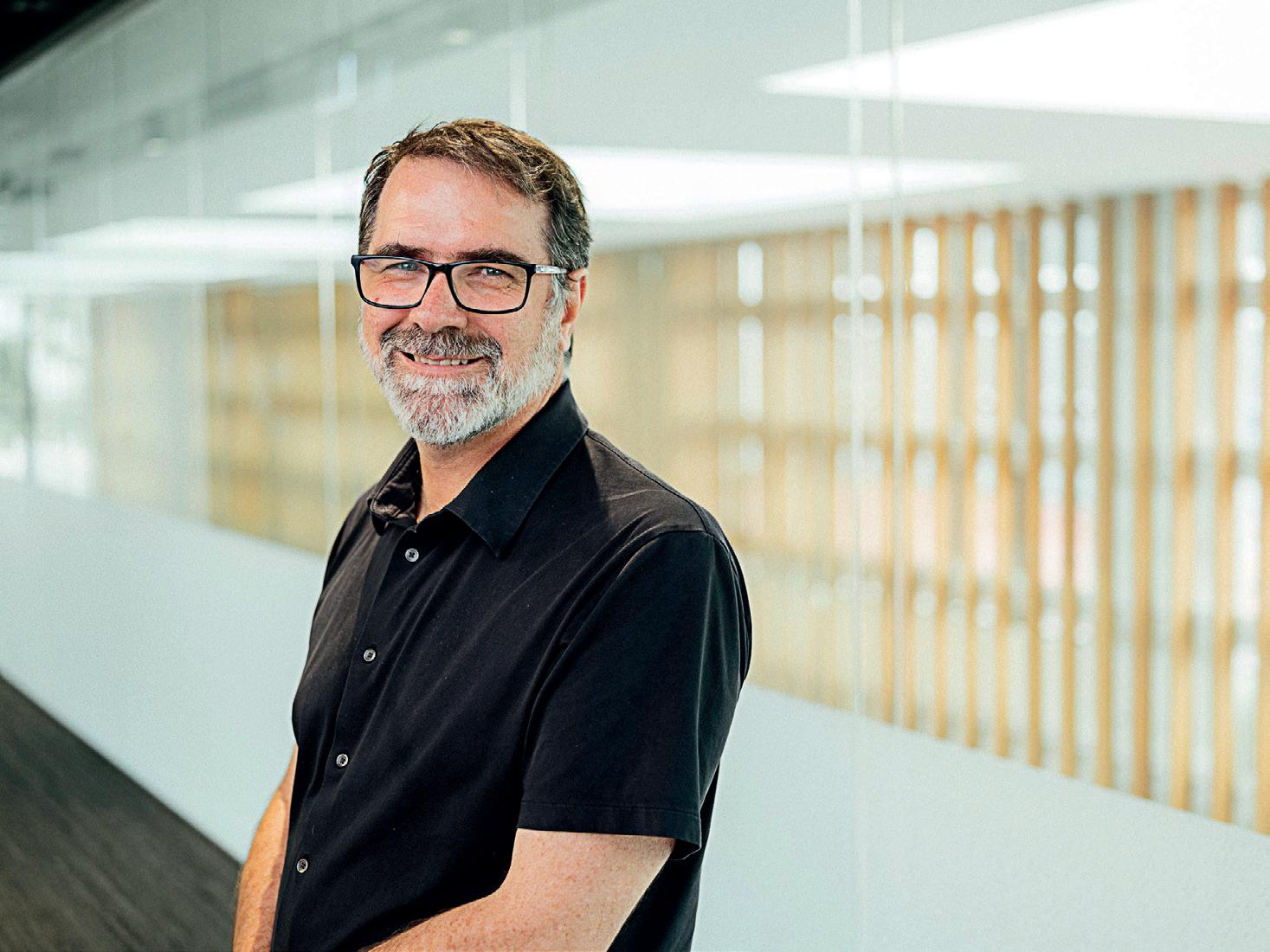
cultivating critical dispositions. It’s about being able to step back and say: this doesn’t feel right.”
“My research is still very much about learning and education, but always in relation to the technologies in people’s lives,” he says. “It’s about how people learn with media, how they produce it, and how they critically re ect on it. Deepfakes sit right at the intersection of those issues.”
For Dr Dezuanni, deepfakes cannot be separated from the broader field of media literacy. “There are two key areas: one is misinformation, where manipulated media is used to push misleading narratives into the world. The other is sexual exploitation students using apps to create nude or sexualised images of their classmates. Both are incredibly concerning, and both require education as well as regulation.”
While the term ‘deepfake’ may dominate headlines, Dr Dezuanni is not convinced it’s widely used by students themselves.
“They’re more likely to talk about the specific apps, or ust refer to it as something you can ‘do with AI’,” he says. “Even before AI, there were ways of creating misrepresentative, sexualised content of classmates. Unfortunately,
those practices are already familiar to young people, whether or not they know the word ‘deepfake’.”
He is concerned that schools often don’t act until a scandal forces them to. “What I see is schools ending up in crisis mode, dealing with a deepfake scandal or online abuse rather than building resilience in advance. Too often, technology policies are just lists of restrictions. A student signs a form, and if they break the rules, that’s it. We need policies that are far more proactive and that involve staff, parents and students in conversations about what kind of digital community we want to be,” he says.
That, he believes, means embedding media literacy throughout the curriculum. “I’m a strong proponent of introducing media literacy in the very early years,” he says. “We know children are being handed phones and tablets from a young age. Even if parents worry about screen time, the reality is that kids are growing up with devices. Schools need to be responsive to that.”
But this doesn’t mean overburdening teachers, he adds. “Teachers already
have so much on their plates. But often it’s not about adding something entirely new it’s about twea ing what’s already happening. You can build media literacy into existing lessons, whether it’s in English, history, or even science. What matters is cultivating that critical attitude
“Too many young people are the victims of a form of sexualised online abuse,” Dr Dezuanni says. “That may or may not be part of bullying, but it is harmful in itself. Helping young people understand why that’s so problematic, and building ethical frameworks from a
This is where the ethical side of media literacy matters as much as technical skills. “If young people are seeing nudified’ content of classmates, they should be reporting that to an adult,” he says. “That’s really what it comes down to. They need to understand that this is abuse, not a joke.”
The challenge, however, is that students often hesitate to speak up. As the eSafety Commissioner notes, many worry they’ll lose device privileges if they report.
New data reveals reports to eSafety’s image-based abuse scheme about digitally altered intimate images, including deepfakes, from people under the age of 18 have more than doubled in the past 18 months, compared to the total number of reports received in the seven years prior. our out of five of these reports involved the targeting of females.
While the rapid rise in reports is cause for concern, the reality may be worse, Ms Inman Grant warned.
“We suspect what is being reported to us is not the whole picture,” she said.
“Anecdotally, we have heard from school leaders and education sector representatives that deepfake incidents are occurring more frequently, particularly as children are easily able to access and misuse nudify apps in school settings,” Ms Inman Grant said.
“With just one photo, these apps can nudify the image with the power of AI in seconds. Alarmingly, we have seen
these apps used to humiliate, bully and sexually extort children in the school yard and beyond. There have also been reports that some of these images have been traded among school children in exchange for money.”
So what can teachers do in practice?
Dr Dezuanni says one approach is to teach students to verify information by consulting multiple sources, a strategy he describes as ‘lateral reading’. act-chec ing often gets tal ed about in relation to news,” Dr Dezuanni says. “But it’s really about any situation where you’re unsure about the information in front of you. If a student sees a post that doesn’t seem right whether it’s about a celebrity or a political issue they should learn to loo at other reliable sources to verify it.”
He acknowledges the limits of this method: “If we’re talking about a deepfake nude of a classmate, lateral reading doesn’t apply. In those cases, the priority is ethical decision-ma ing. oung people need to understand what they’re seeing is abusive, and the appropriate response is to tell an adult.”
For Dr Dezuanni, this underlines the need to teach both skills and values.
“Media literacy is about cultivating critical dispositions,” he says. “It’s about being able to step back and say: this doesn’t feel right. It’s about knowing when to fact-chec , but also nowing when something crosses an ethical line and must be reported.”
Not all uses of AI and synthetic media are harmful. In fact, many are highly creative, offering students opportunities for self-expression and storytelling. This duality complicates the picture for educators.
“Teachers have always had to balance young people’s enjoyment of media with the need to help them think critically about risks and harms,” Dr Dezuanni says. “Media literacy is not about taking the fun away. Young people learn a lot from gaming, social media, and creative play online. We need to recognise those positives while also preparing them to manage risks.”
His research into online reading communities illustrates this. “On TikTok,
you have this ‘BookTok’ corner where young people are enthusiastically sharing their love of reading. As an English teacher, find that incredibly exciting,” he says. “It shows that digital platforms can foster deep engagement, not just distraction.”
For schools, the task is to hold both truths: celebrating the creativity digital tools allow, while acknowledging the risks of manipulation and misuse. onfidence is often the missing ingredient for educators. While curriculum bodies like ACARA have introduced resources such as the Curriculum connection: Media consumers and creators guide, Dr Dezuanni says teachers need more concrete tools. hat resource is terrific in outlining content descriptors and elaborations,” he explains. “But what we lack are the specific classroom materials and lesson plans that teachers can use straight away especially when the topics are controversial or sensitive.”
He points to the Common Sense Media Digital Citizenship curriculum, widely used in the United States, as a strong model. “We trialled it here with students from Prep through Year 7, and it was very effective in helping teachers introduce these issues at ageappropriate levels.”
Teacher training is another gap, he says. “We don’t do enough focus on this in pre-service teacher education. Most teachers enter the profession without training in how to teach media literacy or digital citizenship. We need much stronger emphasis both in teacher preparation and in ongoing professional learning.
Ultimately, addressing deepfakes in schools requires more than detection software or punitive discipline. It calls for a shared commitment across educators, parents, policymakers and students themselves.
As Dr Dezuanni puts it: “If we want young people to understand the risks of deepfa es or to resist the temptation to misuse the technology we can’t wait until a crisis occurs. We need to be building these skills, these ethical frameworks, from the earliest years.” EM
Responding to deepfakes in schools: practical guidance
Set expectations early
• Build on existing digital literacy, respectful relationships, and consent education by including conversations about deepfakes and emerging technologies. Make sure this includes clear guidance on the use of AI tools and image-based abuse.
• Talk to students about how consent applies in online spaces – and how technology can be used to fake or manipulate images. Help them understand that even when content is fabricated, it can still cause real harm.
Have a response plan
• Use eSafety’s new guide for responding to deepfakes, part of its Toolkit for Schools, to help manage incidents. This resource is designed to work alongside your existing school and education sector policies and procedures.
• Prioritise the wellbeing of affected young people or staff above all other considerations.
• Establish clear steps for responding to deepfake incidents. Make sure all staff know how to support students, record what has happened, and work with families, police, and eSafety.
• Ensure your school’s wellbeing and leadership teams are prepared and confident in handling these situations with care, consistency, and sensitivity.
Support student wellbeing
• Recognise that these incidents can be traumatic. Make sure students who are affected have access to safe reporting channels and wellbeing support.
• Engage the school community.
• Communicate with parents and carers about deepfake risks and school policies. Use newsletters, assemblies, or parent forums to raise awareness and reinforce prevention.
Encourage students to be ‘upstanders’
• Help them know how to report abuse, support peers, and model respectful behaviour online.
Source: eSafety Commissioner

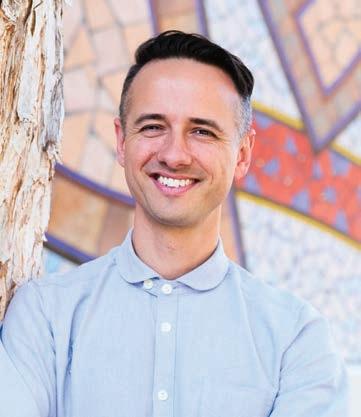
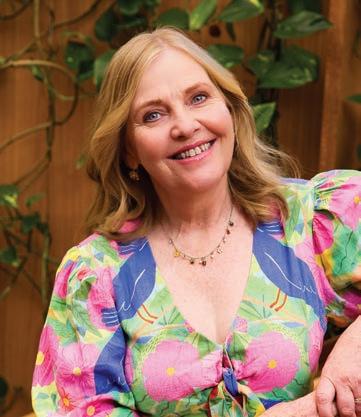
Be authentic. Be original. Be yourself. Join a secular, coeducational school—Preschool to Year 12—dedicated to bilingual learning with a global outlook.
Sé tú mismo
Teach at IGS. Apply today. igssyd.nsw.edu.au
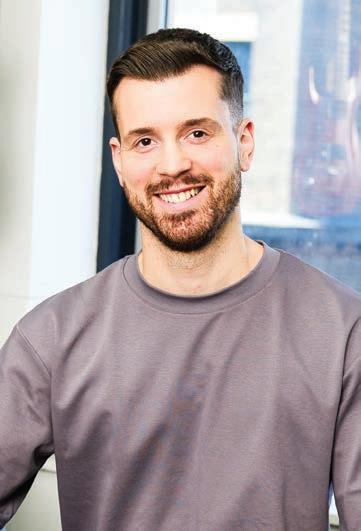
Ms Ellie McDougall brings regional experience, authenticity, and a belief in public education to her new role as Principal of Camberwell High School, shaping its next chapter.
When Ms Ellie McDougall walked through the doors of Camberwell High School at the beginning of this term, she knew she was stepping into a community with a proud history and strong reputation. The coeducational government secondary school, established in 1941, is home to around 850 students, including a vibrant international program. For Ms McDougall, taking on the role of principal is both an exciting professional challenge and a personal commitment to public education.
“I like to lead with care, clarity and coherence, but with both my heart and my head,” she says. “For me, it’s about high levels of empathy, but also high expectations. I try to take a collaborative and transparent approach, building strong trust and collective responsibility among staff and students.”
This balance of empathy and expectation has defined s McDougall’s leadership journey – one that began in regional Victoria and has now brought her to one of Melbourne’s most established public schools.

secondary school, where she began her career.
Ms McDougall grew up in Ararat, a regional town in western Victoria where her family had deep ties. “My grandfather was mayor when I was born, so our family was very connected to the community,” she recalls. She attended Catholic schools – Marian College and St Mary’s Primary – before completing a Bachelor of Physical Education with a minor in Science. Her final teaching placement brought her back to Ararat College, the local public
“I was lucky enough to pick up a scholarship position at Ararat College as a graduate in 2009,” she says. “From there I moved very quickly into positions of responsibility. By my second year I was already a Year 9 Coordinator, then later took on daily organisation and leadership roles in the junior school.”
Her progression through leadership was steady and swift. “I came bac from my first maternity leave and moved into the daily organiser role,” she recalls. “By 2013 I was acting junior school leader, looking after Years 7–9. That was a leading teacher role, and I stayed as a leading teacher until 2018.”
In 2016 she also stepped up as
Acting Assistant Principal. “Those roles gave me experience across all levels of a school,” she says. “It was a really good grounding before moving into principalship.”
By 2018 she had left Ararat College for an Education Improvement Leader role with the Department of Education in the Wimmera South West. Based in Horsham, she supported schools across a vast area. Spanning from the south coast up to the Mallee, she says the role gave her perspective on the diversity of contexts schools work in, and the importance of tailoring leadership and support to each community.
During her second maternity leave, Ms McDougall added another dimension to her career by studying for an MBA. “Most people in education
go on to a Master of Education, but at the time those programs weren’t as developed as they are now,” she explains. “I was also thinking about my direction – I thought an MBA might give me options if I ever wanted to move outside education, but it would also strengthen my skills if I went into leadership. It’s turned out to be incredibly useful in school leadership.”
By 2019 she was back at Ararat College, stepping into the role of Acting Principal. “It wasn’t something I ever expected to do,” she admits. “But along the way I’ve always had leaders who believed in me, encouraged me to take leaps into roles I wasn’t sure I was ready for. Once I stepped in, I realised how much I enjoyed it.”
Initially Acting Principal for 18 months, she became substantive in July 2020, in the middle of COVID-19. “My whole interview was online,” she recalls. “It was such a strange time. But that period really shaped me – resilient, adaptable, and deeply conscious of wellbeing for staff and students.”
n she returned brie y to the Department as an Executive Principal with the Differentiated School Support Initiative (DSSI), working on a project with secondary schools across the Wimmera South West. She says the experience helping other schools on improvement projects and seeing the
breadth of work across the region provided a valuable perspective.
If there is a single thread running through Ms McDougall’s career, it is her belief in the value of public schooling. “I’m very passionate about public schools,” she says. “Everyone should have opportunity through education, regardless of the family or circumstances they’re born into.
“I went through the Catholic system, and it was a great experience for me,” she says. “But when I began teaching at Ararat College, I became aware of contexts I’d never experienced – levels of disadvantage that really opened my eyes. I strongly believe that education should not be determined by your background.”
At Ararat, Ms McDougall oversaw significant growth, with enrolments rising from 270 in 2019 to 350 by the time she left in 2025. That experience of leading a regional school with high
“Being a principal is incredibly challenging, but it’s also deeply rewarding. At the end of the day, the students are the reason we do what we do.”
Ms Ellie McDougall, Principal
levels of disadvantage gave her a sharp perspective on equity and opportunity. Moving to Camberwell High School, where the Index of Community SocioEducational Advantage (ICSEA) suggests relatively low disadvantage, brings a contrast she acknowledges openly.
“It’s a very different context,” she says. “At Camberwell we have about 850 students, around 100 of whom are international, and 110 staff. At Ararat we had about 50 staff. So it’s a big step up. But the fundamental issues – student wellbeing, quality teaching, supporting staff – those are the same everywhere.”
Her leadership philosophy has evolved through experience and re ection. he describes herself as someone who leads “with transparency and vulnerability”, qualities she says took time to develop.
“As a young leader, I thought everything had to be shiny and perfect. I would see other leaders speak and think, ‘I need to be like that’. Over time I’ve realised authenticity is far more important. Staff and students respond when they know you’re real with them. Vulnerability can build trust. It doesn’t mean lowering expectations – it means being honest about challenges, and then working through them together.”
That authenticity underpins her emphasis on collaboration. “I like to lead with people, not do things to
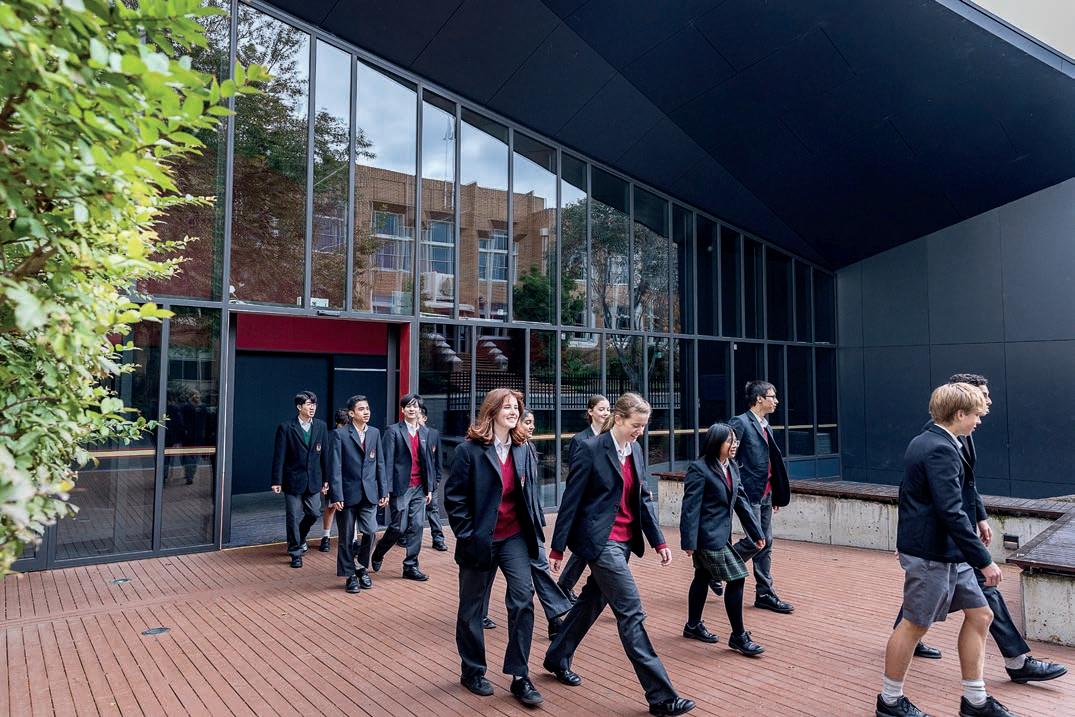
them. For me, it’s about creating an environment of high trust, where staff feel empowered to take responsibility together. That’s when you get real collective efficacy.
She often refers to the idea of balancing “head and heart” in leadership, in uenced by professional learning with educational leader Tracey Ezard. “It resonated with me – leading with both intellect and empathy. You can’t do one without the other.”
Since starting this term, Ms McDougall has been careful to listen before acting. “I’ve been doing one-onone meetings with every staff member. I’m about halfway through the 100 or so. Those conversations are vital, because they help me understand not just what staff do, but what drives them and what they care about. It’s the human element that matters most.”
Through those discussions, she has been struck by the pride staff feel in their school. “They’re very connected to Camberwell, and they have strong ideas about where we could go next. It’s been incredibly valuable.”
The timing of her arrival has been
the end of a four-year strategic plan,” she says. “Because my appointment took a little longer, the review was delayed, so I’m here at exactly the right moment to lead the next plan. It’s exciting to be part of shaping the direction from the ground up.”
Looking ahead, she wants to connect wellbeing and learning in a stronger, more systematic way. Schools often take a reactive approach, responding only after issues arise. She says a better strategy is to implement consistent routines and multi-tiered support systems, ensuring staff and students know what to expect and that support is embedded in everyday practice rather than reserved for crises. She also wants greater clarity in how the school approaches teaching and learning. We’ll be refining our meeting schedules, our professional learning structures, and making sure staff see themselves in the strategic plan. If change is going to be sustainable, staff need to understand the ‘why’ behind it.”
Professional learning is another area
But she knows it can be overwhelming. “Sometimes you get offered so many programs, and people say, ‘This is really great, you should try it’. It’s easy to get distracted,” she says. “Early in my leadership I found myself saying yes to too many things. But if you give staff too much, nothing sticks. It becomes surface-level, compliance-driven, and there’s no deep change in practice.”
Instead, she has sharpened her focus. “I try to stick with high-quality programs like those from the Victorian Academy of Teaching and Leadership, which are affordable and excellent. One of the best programs I’ve done was the Harvard Data Wise course in 2020, which I took a group through. It was pivotal for me as a school leader, because it taught me to slow down, to look at the evidence, and to ensure people are really engaged in the process of improvement rather than rushing change.”
Ms McDougall also makes a point of investing in leadership development at all levels. “Not just formal leaders, but that next layer of emerging leaders too. It’s about building capacity across the school so we have strong leadership throughout.”

Like all principals, Ms McDougall is navigating recruitment challenges. “That wasn’t a surprise – I knew it would be the case. But it reinforces how it must be even more challenging for rural and remote schools. If metropolitan schools are struggling, the pressure on isolated schools is enormous. I really admire the work those schools do to sustain a strong workforce.”
At Camberwell, the larger staff provides some buffer, but Ms McDougall is clear-eyed about the challenges. “It’s something we have to manage very carefully.
She adds that recruitment challenges also place extra weight on principals as they ma e staffing decisions. “It’s one of the most complex parts of the role right now –juggling staffing, timetables and resources while trying to maintain consistency for students. It’s something every principal is living with, day in and day out.”
Ms McDougall is also a strong
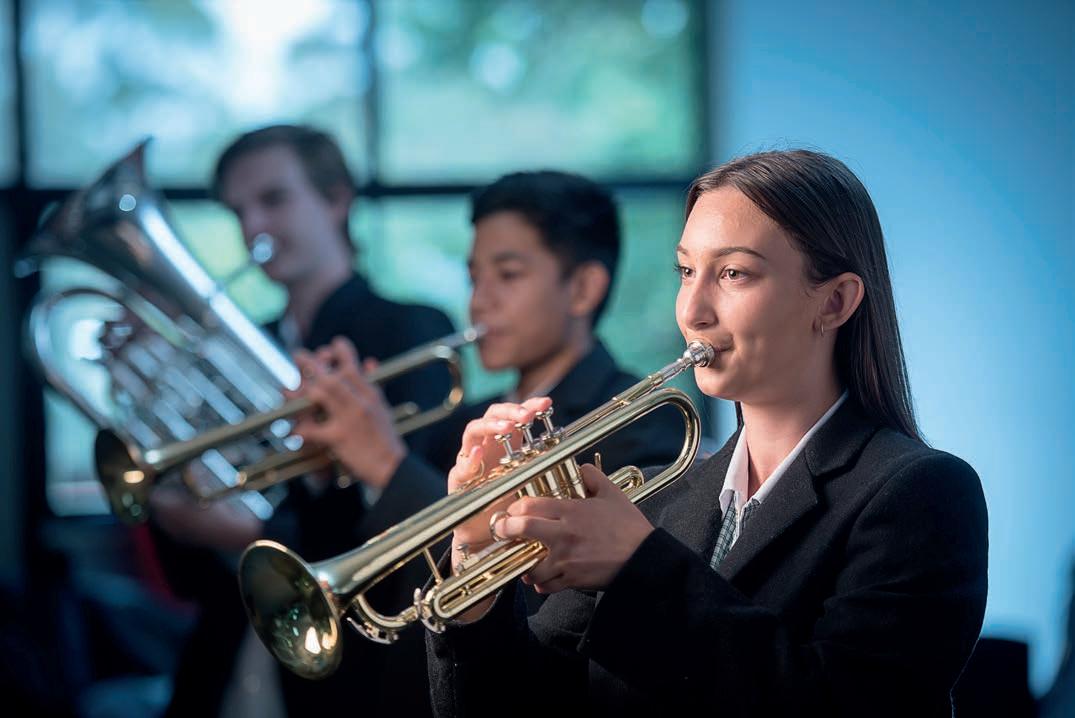
believer in professional networks. She has long been active in the Victorian Association of Secondary School Principals (VASSP), serving as president of her local group while in Ararat. “It’s a fantastic association for like-minded principals,” she says. “It’s proactive and solution-focused but also provides advocacy for the profession. The connections are invaluable – the annual conference always fills the buc et.
She is also a member of the Australian Principals Federation, an organisation she says plays a vital role in ensuring national representation for their voice. With workforce shortages, heavy workloads, and growing expectations, collective advocacy is essential, she says.
These networks, she explains, are not only about advocacy but about sustaining leaders themselves. “It can be an isolating role at times. Having those connections – people you can pick up the phone and talk to – makes all the difference.”
Looking long-term Camberwell High has a long tradition of stability in leadership. Ms McDougall
is just the 11th principal in 84 years, following her predecessor who led the school for around 14 years before retiring.
“I was pleasantly surprised by that tradition of tenure,” Ms McDougall says. “Most principals here have stayed at least a decade, if not longer. It speaks to the strength of the school community.”She is conscious of stepping into that legacy while also charting her own direction. “It’s about respecting the history and strengths of the school, while also asking what comes next. I want to build on what’s already here but also make sure we’re preparing students for the future.”
Despite the size of Camberwell High, Ms McDougall makes a deliberate effort to stay connected with students. “I walk around during class time and yard time, I meet with student leaders weekly, and I take a Year 9 mentor class. That’s really important to me –understanding what’s happening on the other side of the desk.”
She also joins in school life whenever possible. “Today I’m umpiring the Year 12 versus teachers’ netball game,” she laughs. “Those
moments matter – they show students that you’re part of the community.”
It’s in those informal moments, she adds, that relationships are built. For Ms McDougall, being present and engaged in the school community – whether by supporting students, participating in activities, or simply being visible has a significant impact. She believes effective leadership isn’t just about making major decisions; it also involves showing up consistently in everyday moments.
“Being a principal is incredibly challenging, but it’s also deeply rewarding,” she says. “It’s a privilege to see the growth of young people and to know you’ve had an impact. That’s what keeps me anchored – the students. Because at the end of the day, they’re the reason we do what we do.”
It is that sense of purpose that drives her through the long days and complex decisions. “The role can be exhausting. But when you see students ourish, when you watch staff grow in their practice, when you know you’ve made a difference –that’s the reward. That’s what makes it all worthwhile.” EM
From classroom teaching to trauma-informed practice, Mr Sam Wright is reshaping how Padua College approaches wellbeing –ensuring care, resilience, and student voice remain at the centre of its culture.
On the Mornington Peninsula in Victoria, Padua College stands out not only for its size – four campuses and 2,500 students – but also for its commitment to student wellbeing.
At the heart of this effort is Mr Sam Wright, Vice Principal of Students, who oversees pastoral care and wellbeing across the college.
"We have three junior campuses for Years 7 to 9, and then all students come together at the senior campus for Years 10 to 12," Mr Wright explains. With 2,000 students at Mornington and about 300 each at Rosebud and Tyabb, consistency and coordination are essential. "We all follow the same timetable, so pastoral lessons, recess, and lunch breaks happen simultaneously across campuses. It creates a strong sense of unity."

Mr Wright has been at Padua for nearly six years, bringing with him experience from smaller regional Catholic schools. Previously Deputy Principal at Mary MacKillop Catholic Regional College in Leongatha and St Mary MacKillop College in Swan Hill, he had held portfolios in both wellbeing and teaching and learning.
Mr Wright won the inaugural National Education Summit Melbourne Outstanding Leadership Award, announced at the event on 28 August.
“I am very lucky to have so many great people to work alongside me.
who was also my principal at one point in my primary school years –God mother, three aunties and older brother are all teachers, and my wife is a school counsellor. I’m honoured to have education be part of my life growing up. I want to acknowledge all the shoulders I stand on and for the support I receive from family to achieve what I have achieved.”
Education was not always the plan. Mr Wright originally studied zoology before taking up teaching. "I joke with my students that if I couldn’t be a zoologist, the closest thing is being a vice principal at a secondary school – it’s not far off a zoo," he says light heartedly.
Mr Wright still teaches senior classes. Last year it was biology; this year it’s a Year 12 subject on Catholic social teaching. "We found ourselves, particularly during the teacher shortages, having to step back into classrooms," he says. "But I’ve always valued it. It keeps me connected. It gives authenticity with staff –you understand the marking, the preparation, the challenges. And with students, it builds relationships."
For Mr Wright, those relationships extend beyond the classroom. He regularly coaches sports teams and attends outdoor camps, where shared experiences – like rafting mishaps in freezing rivers – help strengthen
bonds. "It reminds students that we’re in this for more than administration. We’re here because we believe in the ability to change lives."
When Mr Wright arrived at Padua, one of the first things he noticed was the need for a structured approach to wellbeing. "In a school this size, things can’t happen by default. They have to happen by design," he says. The pandemic only heightened this need. "Coming out of COVID, mental health was a significant issue. Anxiety, depression, low-level mental health challenges – all of these were increasing. We had to be deliberate about how we supported students."
Padua’s response has been comprehensive. Data is gathered through surveys, research, and internal feedback, as well as from counselling services. The results informed a tiered wellbeing program, with initiatives ranging from pastoral lessons and guest speakers to systemic staff training. A major shift was reframing the role of the counselling team. "We use what I call the RACV model," Mr Wright says. "Like roadside assistance, their role isn’t to replace the gearbox – it’s to get students back on the road, back into class. If further help is needed, we refer out."
One of Padua’s agship initiatives has been training all 350 staff in youth mental health first aid. We made sure it wasn’t just teachers – it included librarians, aides, office staff, everyone, Mr Wright explains. "If students are going to learn the language of mental health, staff need to understand it too."
This training laid the groundwork for student programs. All Year 8 and Year 10 students now participate in teen mental health first aid, which addresses the top five adolescent challenges anxiety, depression, disordered eating, psychosis, and substance abuse. Alongside this, seminars cover respectful relationships, consent, gender stereotypes, and cyber safety. "We’re now into our second year of running it for students, and we’ve extended it to parents as well," Mr Wright says. "It’s about the whole community developing literacy around mental health.
Mr Wright emphasises that Padua’s wellbeing approach must remain strategic but exible. We capture the right stuff at the right time," he says. For example, road safety and safe partying programs are scheduled just before senior socials. "Teenagers listen when it’s relevant." Student voice is also central. Forums on multiculturalism, run entirely by students, have been powerful. "You could hear a pin drop," Mr Wright recalls. "It’s about ensuring students have agency and opportunities to be heard."
He also points out the importance of involving external experts at the right moments. For cyber safety, respectful relationships, or resilience, Padua often brings in guest speakers and facilitators to complement what staff provide internally. "It’s a balance," Mr Wright says. "Sometimes our coordinators run sessions, other times we use external providers. It keeps the program fresh and responsive to student needs."
Staff wellbeing has also been prioritised. Recently, Padua partnered with the MacKillop Institute to embed trauma-informed practice across the school. "It comes back to that airline analogy – you put your own mask on first. upporting staff ensures they can
support students." For Mr Wright, this balance between student and staff care is vital. "In the current teacher climate, we can’t just talk about resilience for kids without ensuring our staff have the capacity and support they need."
He highlights how the school creates captive audiences to deliver key messages. Before Year 11 and 12 socials, students must attend sessions on road safety or safe partying to collect their tickets. "If you have teenagers, you know they’ll listen when it’s connected to something that matters to them. So we deliver the right learning at the right time."
Mr Wright speaks with both humour and intensity about his role. "I found out when I was backpacking in Africa that hippos don’t talk back. I need to be somewhere I can talk," he says. More seriously, he re ects get passionate about this work because we’re not just managing schools – we’re shaping lives."
Mr Wright’s focus remains on ensuring Padua’s students and staff are equipped to navigate challenges with resilience and care.
"It’s about design, not default," he says. "And about keeping students –and their wellbeing – at the centre of everything we do." EM
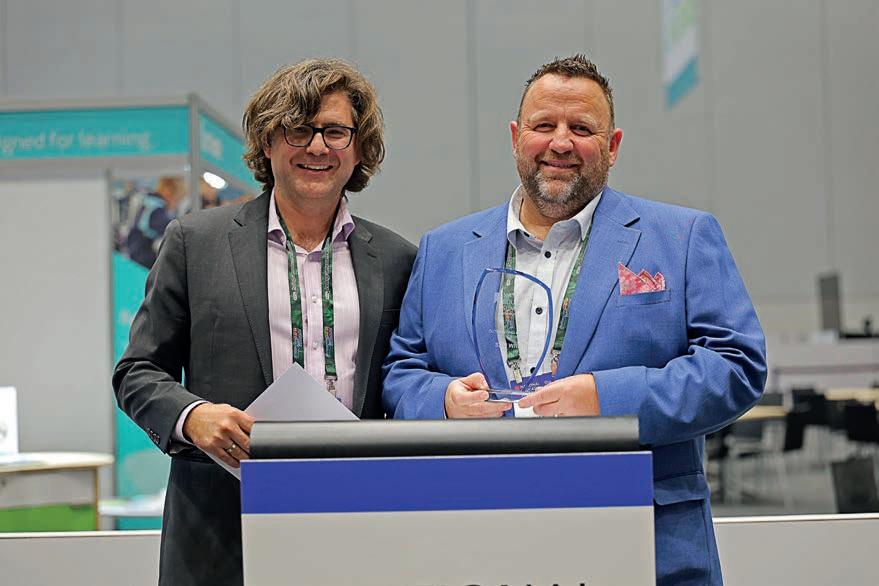
Mr Sean Curtis’s evolution from PE teacher to strategic school leader reflects Marsden’s dynamic growth, diverse community, and commitment to nurturing excellence through inclusive leadership.
When r ean urtis first arrived at arsden tate igh chool in as a young PE teacher, he could not have imagined that within a decade he would be second-in-command of the largest high school in the southern hemisphere. oday, as Associate Principal of the ogan-based school, r urtis oversees a community of nearly , students and staff, guiding a leadership team that feels more li e the executive of a large organisation than a traditional school.
arsden’s sheer scale brings a unique complexity. We’ve got students from language bac grounds, per cent are EA D, per cent students with disability, and per cent irst ations students, r urtis says. t’s a diverse, multicultural place, and that ma es it challenging but also incredibly rewarding. he ob is about understanding people and bringing them together.
r urtis’s own bac ground in semi-professional soccer and coaching continues to shape his approach to leadership. oaching is leadership, and leadership is coaching. hey’re the same thing to me. t’s about how you get the best out of people, how you bring them together, and how you solve problems to reach a collective goal, he explains. grew up in ogan, and never had a specific



ambition to be a principal or associate principal it happened organically. ’ve always been comfortable leading from that coaching perspective. hat philosophy has guided him through arsden’s leadership ran s, from running its soccer excellence program to leading year levels, then returning from a two-year stint at leveland igh chool to step into deputy and now associate principal roles. oday he manages deputy principals and more than heads of department. t’s a big moving piece, he says. Each deputy has either a year-level cohort of around students or a specialist portfolio li e staffing, pedagogy, curriculum or operations. y role is to ma e sure all those moving parts are aligned with our strategic plan and pulling in the same direction.
or r urtis, the greatest challenge is not infrastructure or logistics it’s people. he hardest part isn’t always the ids. t’s the adults. Everyone’s at a different stage, with different pressures outside of school, and you’ve got to wor with
“That’s what leadership is about – creating the conditions for people to thrive.”
Mr Sean Curtis, Associate Principal
that. ometimes the students are easier. With staff, you’ve got to now when to push, when to support, when to pull bac a little. hat’s the art of leadership. he students, however, present their own evolving complexities. We’re seeing more anxiety, more trauma, more wellbeing needs than ever before, he says. f ids don’t feel safe, or their anxiety is too high, or they’ve got trauma that isn’t addressed, the learning ust won’t happen. hat’s the reality. And schools li e ours don’t have psychiatrists or trauma specialists on staff. We do our best with the training we have, but at the end of the day, we trained to be teachers, not clinicians. r urtis says arsden’s
strategic vision is grounded in the Department of Education’s Equity and Excellence framewor , which the school contextualises for its own community.
We’re refining our excellence programs, ma ing sure attendance and behaviour are aligned, and embedding inclusive practices in every classroom, he says. Differentiation is hard wor for teachers when you’ve got students in a class, every one of them different, that’s a big as . ut it’s essential if we’re serious about equity.
ecognition of his leadership has come quic ly. r urtis received the inaugural eadership Award at the ational Education ummit’s eacher Awards in risbane this year. t was a real surprise. didn’t even now ’d been nominated one of my colleagues put my name forward. uddenly was up there accepting the award. t was humbling.
hat’s one of the great things about arsden. t’s a place where leaders grow. A lot of our deputies go on to be principals. he opportunities here are huge.
r urtis invests in his own development, too. A member of the ueensland econdary Principals’ Association, he has begun wor ing with an executive coach, r eil arrington. ust li e athletes need coaches, leaders do too, he says. coach others, but need someone coaching me as well. eadership is about growth, and you can’t expect to help others improve if you’re not improving yourself.
Despite the demands of his role, r urtis maintains his connection to sport. e has coached the ueensland under- soccer team for the past eight years and continues to support arsden’s soccer excellence program. We’re in the chools Premier eague the top soccer schools in ueensland. We’re sitting about fourth right now. t’s growing every year, especially with more of our African student population oining. hey bring so much talent and passion for the game.
ugby league, though, remains the school’s crown ewel. About of our ear boys already have contracts, he says. hat shows the
strength of our rugby league program. ut we’ve also got strong bas etball, netball and volleyball pathways. port is a huge part of who we are as a school.
oo ing ahead, r urtis says the mission remains clear eep building a school that balances excellence with equity. arsden is a special place. t’s not perfect, and it’s not easy. ut every day we’re wor ing to ma e sure ids feel safe, supported and inspired to succeed. hat’s what leadership is about creating the conditions for people to thrive. And for me, that’s the most rewarding part of the ob.
e also believes the lessons learned at arsden have value far beyond ogan.
When you’re leading a school this si e, you’re really running a complex organisation, he says.
he things we’re doing here around inclusion, wellbeing, and staff development could apply to any big system, whether it’s education or not. ut at the end of the day, it’s still about people, and it’s still about giving young people the best possible chance to succeed. EM



Secondary students benefit when exposed early to diverse higher education and training pathways. NSW Minister Mr Steve Whan explains how schools and governments nationally are broadening opportunities beyond university.
For many decades, the most common message given to students finishing secondary school was simple: get into university. A degree was widely viewed as the surest route to success. Yet the reality has always been more complex, and today the narrative is finally catching up. With the growing demand for skilled workers, rapid shifts in technology, and increased recognition of vocational education and training, the focus is broadening. Schools are being asked to prepare students for a wider set of futures, where TAFE, apprenticeships, micro-credentials and work-integrated learning sit alongside university as equally valid choices.
This evolution is not just about expanding options. It is about ensuring that every young person leaves school with a plan and the confidence to pursue it. Mr Steve Whan, NSW Minister for Skills, TAFE and Tertiary Education, says the need has been sharpened by national reforms.
“The Australian Universities Accord tells us we need nine out of every ten school leavers doing a post-school qualification, he explains. hat focuses our attention nationally on the need to provide pathways information early, so young people in Years 9 and can ma e active choices.
Across Australia, governments, schools and industries are responding to that call. What was once an occasional careers talk in Year 12 is evolving into a much more integrated approach, where pathways discussions begin earlier, industry
engagement is ongoing, and schools are supported to guide students toward a diverse set of opportunities.
Every year, the Department of Education offers VET curriculum to more than 30,000 students (Years 1012) in NSW public schools through its own Registered Training Organisation.
The NSW Department of Education O has E qualifications on scope for delivery in its schools. Every public
“Society has said for decades that university is the default. That’s simply not true for everyone. What matters is that young people know all the options.”
Minister Steve Whan
school is required to set a pathways improvement measure in its School Excellence Plan, ensuring leaders take responsibility for student outcomes beyond the school gates. The target is to lift post-school engagement from around 88 per cent to 92 per cent by 2027. That emphasis is mirrored nationally: Victoria has embedded Vocational Major streams within the VCE, Queensland continues to expand school-based apprenticeships, and Western Australia is strengthening links between secondary schools and local industries through its VET Delivered to Secondary Students strategy.
What these approaches share is a recognition that post-school preparation cannot be left to the final year. tudents benefit when career education begins early, and when schools have access to the resources, partnerships and programs needed to make those pathways real.
Mr Whan highlights two NSW initiatives as examples of what this looks like in practice. The Educational Pathways Program (EPP), which began as a pilot in 24 schools in 2020, is now running in 183 high schools. It enables students to complete vocational qualifications, gain exposure to employers, and secure the equivalent of a year’s credit toward an apprenticeship before they finish school.
“It’s producing really positive results, r Whan says. When tal to the young people involved, they’re genuinely excited. And many say their parents hadn’t thought about these options before, but can now see how valuable they are.
The Regional Industry Education Partnerships (RIEP) program goes a step further, embedding staff who work directly with local employers to create bespoke opportunities for students. More than 4,000 industry partners have been engaged so far, offering students across the entire state of NSW direct exposure to industries they might one day join. t’s about bespo e opportunities, Mr Whan says. “Students get hands-on experiences that show them what’s
possible in their own bac yard. imilar models are evident elsewhere: South Australia’s Flexible Industry Pathways initiative, for example, allows students to begin vocational training in secondary school and continue it seamlessly after graduation.
These programs are not only about building skills but also about shifting perceptions. For too long, many young people were guided towards university as the singular measure of success. Mr Whan sees this mindset as outdated. “Society has said for decades that university is the default, he says. hat’s simply not true for everyone. What matters is that young people know all the options – whether that’s a trade, a microcredential, or a degree.
Parents are a crucial part of that conversation. “Most apprentices I speak to say they joined because they knew someone in the industry. And many trainees say their mum encouraged them, r Whan notes. Ensuring families are informed about the value of vocational pathways is just as important as ensuring schools can deliver them.
The changing labour market reinforces this point. While traditional trades remain vital, the fastest growth areas include sectors such as health, aged care, and technology – all of which offer multiple pathways. In health, for example, a student may start as a school-based trainee, progress to TAFE as an enrolled nurse, and later transition to university for a nursing degree. In technology, companies are increasingly recognising skills gained through short courses and practical experience rather than insisting on a formal degree.
Digital skills, in particular, are reshaping the conversation. In July, ma or firms including icrosoft, and Accenture joined the NSW Digital Compact, pledging that 20 per cent of entry-level digital obs will be filled through non-degree pathways. “It’s being driven by industry itself, r Whan explains. “And what’s particularly encouraging is that companies are sharing how they’re achieving these targets, not eeping it to themselves.
NSW’s Institutes of Applied
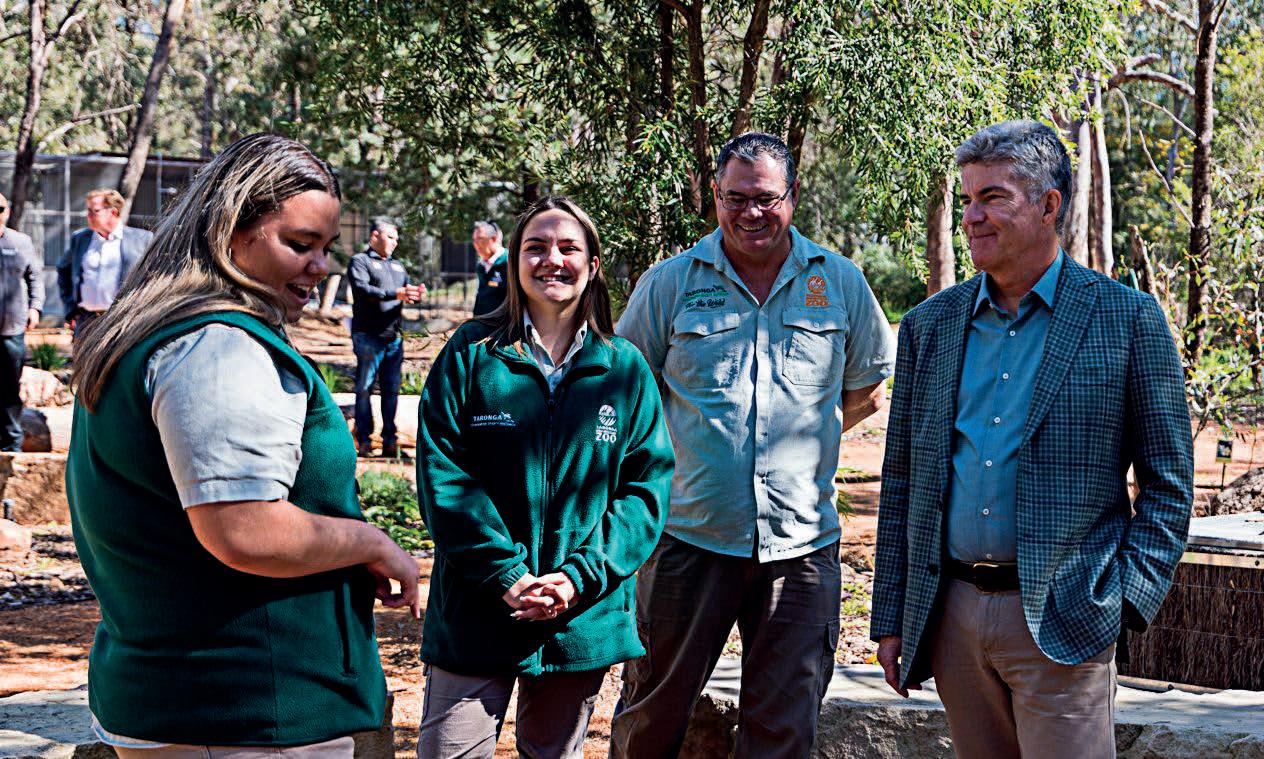

Technology – a collaboration between TAFE, university partners and industry –is a case in point. Since launching, IATs have had more than 300,000 enrolments in areas such as Artificial ntelligence, cybersecurity and data analysis. The model delivers microcredentials and microskills, enabling workers to upskill quickly while staying in the labour force.
These initiatives signal that the future workforce will be built through multiple entry points. University remains important, but so too are TAFE, Registered Training Organisations, industry partnerships and exible learning models.
For schools, the linchpin is still the careers advisor – the person best placed to translate these pathways into practical choices for students. Yet across the country, advisors have often been stretched thin. In NSW, the recent review of the VET system called for integrating localised careers support functions with clarity on the roles, scope, and interactions of these positions in supporting career advisors.
“During COVID and with teacher shortages, advisors were often covering other classes, r Whan says. We’re reinvigorating those networks because they’re central to linking students with EPP, EP and industry partners.
Clarity is equally important when it comes to the relationship between vocational and higher education. At present, credit transfer is inconsistent, leaving students unsure of how their previous study will be recognised by universities.
n health, the pathway is clear, r Whan says. “A school-based trainee in
nursing knows they can move through A E into university. ut in many other areas, it’s not obvious. We need national consistency so students can map their ourney with confidence. hat push for clearer articulation is a major focus of current federal reforms, which aim to create a more integrated tertiary system.
Ultimately, Mr Whan sees these reforms as part of a larger cultural reset. Education is no longer something completed once and for all in young adulthood. Instead, lifelong learning and reskilling are becoming the norm, driven by technological change, shifting industries and longer working lives.
“Whether it’s a degree, a trade, or a micro-credential, young people need to now there are multiple entry points, he says. “And re-skilling later in life is not unusual it’s becoming expected.
For secondary schools, the challenge is to ensure students are aware of this diversity of options early, supported by teachers, families and employers. Programs like EPP and RIEP show what is possible when systems commit to building strong pathways, but there is more to do. The national picture is uneven, and not every school has the same level of access to industry or training opportunities. Yet the direction of travel is clear: a move toward greater exibility, stronger integration and a recognition that success takes many forms.
“The more we can show young people the range of pathways open to them – and the more we involve parents and schools the stronger their future choices will be, Mr Whan says. EM
In a historic first, two Torres Strait Islander scholars have been awarded the prestigious Charlie Perkins Chevening Scholarship to study at the University of Oxford in the United Kingdom.
The Aurora Education Foundation has announced the recipients of its 2025 international scholarships, with five Aboriginal and/or Torres Strait Islander scholars set to study at some of the world’s most prestigious universities.
In addition to the two Charlie Perkins Scholars, three Roberta Sykes cholars have also been awarded, all who have demonstrated leadership potential in their field of study and in their communities, as well as strong community and activist values.
Aurora’s international scholarships wor to remove systemic barriers that stand in the way of Indigenous potential being realised. ifteen years ago, there had never been an Aboriginal and or Torres Strait Islander person studying full-time at Oxford or ambridge. Today, more than 100 Indigenous postgraduate scholars have studied or taught at these and other top universities, with support from Aurora’s programs. he cholars are
• Isobel Loban Yorkston (she/her), a Badu, Mabuyag and Boigu Island woman and Charlie Perkins Scholar, who will complete a Master of Science in International Health

and Tropical Medicine at Kellogg ollege, Oxford.
• hosten avage he him , a Poruma, Mauar, Erub, Bidjara and Dhunghutti man and Charlie Perkins Scholar, who will undertake a Master of Business Administration at Oxford.
• Neika Lehman (they/them), a Trawlwoolway person from Tebrakunna Country and Roberta Sykes Fellow, who will join New or niversity as a esearch Affiliate at the Provostial enter for ollaborative ndigenous esearch with ommunities and ands.
• Eloise Bentley (she/her), a Wiradjuri woman and Roberta Sykes Scholar, who will study a Master of Public Policy at arvard niversity.
• Kishaya Delaney (she/her), also a Wiradjuri woman and Roberta Sykes Scholar, who will also undertake a aster of Public Policy at arvard.
“Our 2025 scholarship recipients join a growing network of Indigenous scholars who are driving change, staying connected to culture, and ma ing an impact across every field they enter. ’m proud to welcome them
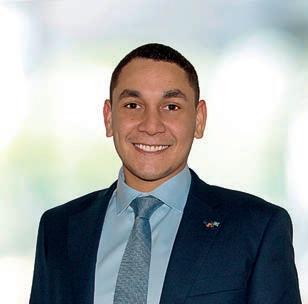

into the Aurora community and excited to see what they do next,” Aurora’s CEO, s eila mith, said.
Torres Strait Regional Authority Chairperson Mr George Nona said the scholarships were a proud moment for families, communities and the entire orres trait.
“This history-making opportunity at the niversity of Oxford will open the door for more Torres Strait Islanders to achieve academic excellence at a global level, r ona said.
“From our island home to the halls of Oxford, we wish Isobel and Bhosten the very best on their academic ourney as they join the world’s best scholars proudly carrying our ag and sharing the unique experiences, culture, nowledge and stories of enadth es.
The remote Torres Strait islands – known traditionally as Zenadth Kes – is Australia’s northernmost region, located between Cairns and Papua ew uinea. EM



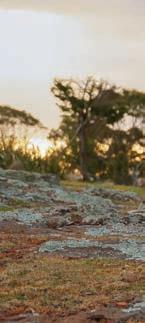




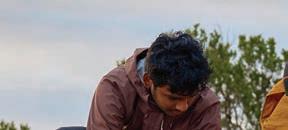
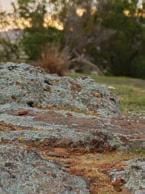


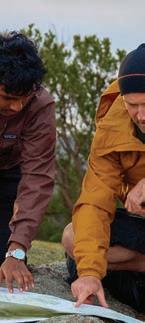

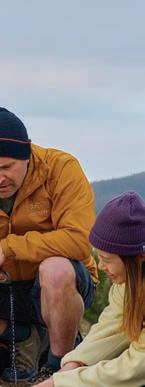

We know that education is more than just a job – it’s a chance to guide, support, and shape future generations.
If you think you have a future teacher in your classroom, we offer a full suite of accredited courses to help them become an inspiring educator. And flexible delivery options allow our students to balance work, study, and personal commitments, with the choice of full-time, part-time, online, and on-campus study.
Our whole island is their campus. Tasmania is a relaxed place to study, placements are plentiful, and as a graduate they will be in high demand here or anywhere in Australia.

Learn more about our options for training the next generation.
Our professional development options allow you to advance your career as a teacher, educator, or leader, and explore the educational challenges of our rapidly evolving global society.
We offer specialisations in Applied Learning, Inclusive Education, Leadership, or TESOL through a suite of flexible and fully online postgraduate courses. And you’ll have access to research centres in Mathematics and Science Education, and Rural and Regional Education.
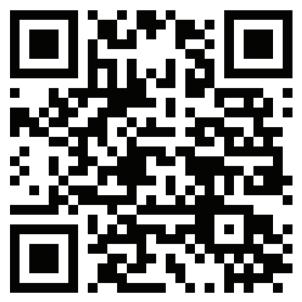
Learn more about taking your teaching career to the next level.
When Associate Professor Marcus Morse describes Tasmania as “the best place in Australia to study outdoors”, he’s not exaggerating. For students at the University of Tasmania, this environment is not a backdrop but the very foundation of their studies.
Outdoor education has long been a staple in Australian schools, often in the form of camps, excursions or enrichment activities. But at the University of Tasmania, a new set of courses is challenging how future educators, guides and environmental leaders are prepared for these roles.
In 2025, University of Tasmania became the only university in the country to offer a Bachelor of Outdoor and Environmental Education (OEE) that is vertically integrated with pathways into guiding and teaching. Associate Professor Marcus Morse, who leads the study area, says the aim was simple but ambitious: “to do something totally new for outdoor education in asmania. he agship offering is a threeyear Bachelor of Outdoor and Environmental Education, which takes students well beyond lecture halls. Classes are balanced with extended fieldwor , from day trips up unanyi Mount Wellington, coastal journeys on the asman Peninsula, to multiday treks along the Overland Track. Students spend half their week in traditional classes and the rest immersed in the field.
Nested within the bachelor is a Diploma of ature- ased uiding essentially the first year of the degree. Students who complete the diploma can either ta e it as a stand-alone qualification for guiding and tourism, or step directly into second-year bachelor studies.
The third strand is perhaps the most unusual a vertical double course that combines the OEE bachelor with a Master of Teaching in just four years. Normally, the two qualifications would ta e five.
“Because of the way the electives are structured, the first year of the master’s is embedded into the bachelor, Dr orse explains. t means students can graduate as fully qualified teachers more quic ly and it’s the only place in Australia you can do that.
The courses are deliberately designed to attract a mix of students. In its first year, the bachelor drew around students half from asmania and half from the mainland. oughly twothirds came directly from secondary school, while a sizeable group were mature students in their s and 30s who had already been working in schools or as outdoor instructors.
“They’re people who have the passion already, Dr orse says.
“Some are teaching assistants, some are guides, and they’ve realised they want to turn that passion into a career.
University of Tasmania expects the 2026 intake to expand to around 60, with demand outstripping early projections. Word of mouth plays a strong role: the outdoor education community in Australia is relatively small, and the idea of studying in asmania an island renowned for its wilderness has proved a strong drawcard.
An island as a classroom
What distinguishes the university’s approach is not only its setting but its philosophy. The courses are built on place-based education a model that prizes the landscape itself as a teacher.
“Rather than treating the outdoors as an add-on to classroom learning, we start with the place, Dr orse says. f we’re on unanyi ount Wellington, what can it tell us about geology,
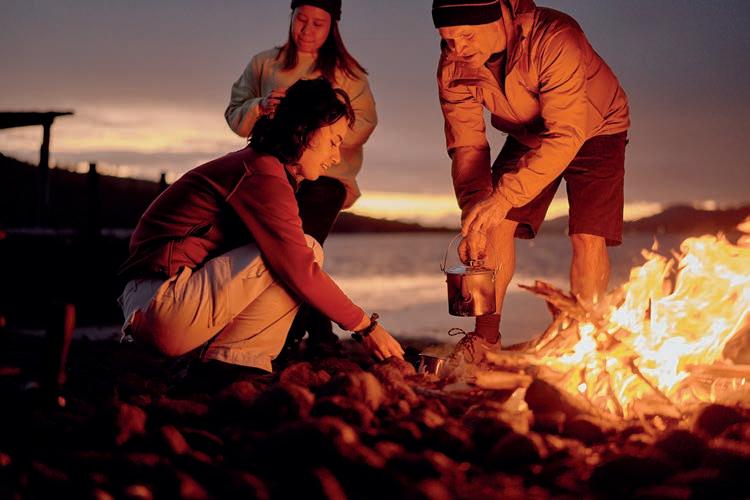

ecology, cultural histories? How does the place contribute to learning tudents eep re ective ournals and nature diaries in addition to standard academic assessments. The aim is to cultivate habits of observation and re ection that can translate into their own practice as teachers or guides. “We want them to notice, to pay attention, Dr Morse explains. “That’s how you learn from place and it’s how you can engage students differently when you go into schools.
Tasmania’s compact geography is central to this model. “From the centre of Hobart, it’s 20 minutes to alpine conditions on unanyi, Dr orse points out. “On the mainland in many places, you’d drive four hours to reach something similar.
Fieldwork runs throughout the degree. irst-year students spend two days a week in classes and two days in the field, with trips ranging from singleday excursions to four-day expeditions. he first-year course’s centrepiece is the seven-day Overland rac tre . hat’s the stand-out trip in first year, in terms of both length and how ama ing it is, Dr Morse says.
Students also travel to Cradle Mountain, the Tasman Peninsula, the entral Plateau and Wu aluwi iwayna Maria Island, places chosen not just for their natural beauty but for the lessons they hold.
“Maria Island is incredible for its geology and history, Dr orse explains. “The Central Plateau is another student favourite. And even being on unanyi is hugely powerful you’re close to obart, but it feels li e another world.
Partnerships with local tourism operators and outdoor educators strengthen these field experiences. tudents meet practitioners in the field, gaining insight into industry practice and professional pathways.
raduates are positioned for careers that extend well beyond traditional teaching. Dr orse identifies three common pathways:
• uiding and tourism from Tasmanian operators to international guiding roles.
• chool-based roles as instructors, teaching assistants, or qualified teachers for those who take the Master of Teaching.
• Land management and cultural
interpretation including ranger positions, water management, and with scope for Indigenous students to move into cultural or heritage officer positions.
As its name suggests, the suite of courses doesn’t treat outdoor education as simply being “in the outdoors . Environmental literacy, sustainability, and cultural awareness are woven through the curriculum. Students engage with Indigenous perspectives both through dedicated subjects and through regular field trips.
“Every time we go somewhere, we engage with the cultural and ecological histories of that place, Dr Morse says.
For him, the value is twofold: graduates are better prepared for diverse roles, and they carry with them a different way of thinking about education itself. EM
For more information, visit www.utas.edu.au/study/ undergraduate/outdoor-andenvironmental-education
As universities embrace artificial intelligence, tomorrow’s school leavers will enter a sector rich with personalised study, creative opportunities and fresh pathways for lifelong learning success.
When it comes to artificial intelligence in education, outh Australia has been quic to act. While many urisdictions hesitated, the state government moved early to embrace A rather than resist it. One of the results was Ed hat, a bespo e A tool piloted in secondary schools before being rolled out more widely. According to the niversity of Adelaide’s Professor Edward Palmer and researcher Dr Daniel ee, this willingness to adopt gave the state a six-to-eight-month lead over others a head start that allowed schools and universities to experiment with how A might reshape teaching, learning, and assessment.
ut early adoption has not been without challenges, as Dr ee’s
research has revealed. We were surprised at how little secondary school students had engaged with Ed hat, Dr ee said. Even when they had access, many chose to use generic tools li e hat P instead. hat decision spea s volumes about how students perceive institutional versus public A platforms. As Prof Palmer, the Director of the Digital earning and ociety ub in the chool of Education at the niversity of Adelaide, explained, students may prefer to wor outside the ga e of teachers, or believe that commercial tools provide better interaction. ome even feared that school-provided platforms were being monitored. his tension between control and
autonomy underpins much of the debate around A in higher education who sets the boundaries, who decides what tools are used, and how does this affect authenticity and integrity in learning Prof Palmer suggested that students may simply trust newer commercial models more than loc eddown institutional versions, which are designed to be secure but sometimes less exible.
he ability to be able to create might be better in some of the more recent releases of A engines, he said. hat could be in uencing their choices as well.
Assessment design is emerging as one of the critical battlegrounds. Dr ee’s team is currently researching how different forms of assessment

rather than crisis f A helps a student helps them learn. don’t mind whether provided they can demonstrate they’ve hat shift in perspective demands more personalised tas s. ather than easily solve, Prof Palmer advocates for experiences as ing them to draw on personal observations, conduct small ways that are harder for A to replicate.
solving problems on a sheet of a paper,
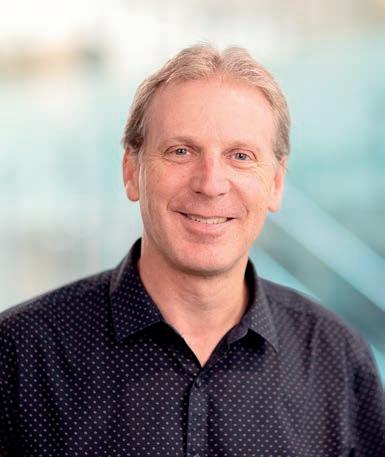

parents, siblings or now A . he point is to set wor where you can determine that the student is the one learning, he said. he larger class si es in higher education ma e this even more pressing, in Prof Palmer’s opinion.
n secondary school, a teacher nows their students’ capabilities. f a piece of wor suddenly loo s out of character, they’ll notice. At university, where a lecturer may have students in a cohort, it’s much harder to detect. One of A ’s greatest promises lies in its potential for personalised learning. Prof Palmer highlighted how A can accelerate differentiated approaches students who are ahead can extend their learning independently, while those who struggle can receive targeted support. eachers have always wanted to tailor learning, he explained, but it’s never been feasible to devise a curriculum for every individual student. A ma es that far more possible. he goal is not to abandon students to machines, but to monitor and guide them while A provides structured pathways.
Dr ee pointed to experiments combining A with virtual reality to create personalised digital tutors. uch immersive tools may help humanise the interaction and eep students engaged, while still allowing teachers to oversee progress. e described research showing avatars capable of tutoring students in real time, giving the illusion of a one-to-one mentor.
nternational models are pushing the
boundaries further, including a exas school where mornings are taught entirely by A , while afternoons are devoted to passion pro ects with human teachers. While Prof Palmer doubted such a model would be wor able for younger students, he ac nowledged that in higher education where learners are more autonomous it could be feasible. he human in the loop remains essential, he cautioned, especially for adolescents whose decision-ma ing s ills are still developing. ut at the university level, carefully designed A integration could allow students to follow interests while still meeting curriculum goals. uch of the public discussion around A in education has focused on reducing teacher wor load automating report writing, administration, and routine feedbac . Prof Palmer agreed these are valuable benefits, freeing educators to spend more time teaching and mentoring. et both he and Dr ee see the real innovation in pedagogy. hey argue A should not simply replicate existing tas s more efficiently it should enable forms of teaching and assessment that were previously impossible.
One topic rarely raised in schools, but increasingly discussed in universities, is the environmental footprint of A . he environmental cost of training A models has increased significantly. he latest figures suggest training hat P . emitted as much O2 as seven itsubishi Outlanders during their lifetime, Dr ee said.
Prof Palmer added that tech
companies are even stri ing deals to bring nuclear power plants online to meet A ’s energy demands. hat’s a huge ethical issue in itself, but also a teaching opportunity, he said. At present, universities are incorporating those discussions into coursewor . he niversity of Adelaide is embedding these debates directly into its curriculum. A new A ommon ore course will soon be available for all undergraduates, exploring ethics, responsible use, environmental impacts, and the boundaries of what A should and should not do.
tudents will loo at what you can do with A , what you shouldn’t be doing with it, and how to genuinely learn with it, Prof Palmer explained. hat’s central to our responsibility at the higher education level. Equally important is that A is being used in industry, new obs are being created specialising in A and we must teach students how to use it effectively and correctly.
Despite the sophistication of A tools, both experts emphasised that educators remain the ey safeguard of learning integrity. eachers and lecturers are trained to recognise student progress and capability. he challenge is ensuring that A supports rather than undermines that professional udgment, Prof Palmer said.
hat may mean rethin ing assessment, balancing efficiency with rigour, and openly discussing with students what responsible use loo s li e.
As Dr ee put it, he assumption that A is helping is itself worth questioning. t’s changing education, certainly but whether it helps depends entirely on how we design for it.
A in higher education is not a passing trend. rom personalised learning and assessment innovation to ethical debates about energy consumption, it is reshaping the sector at every level. or secondary school leaders preparing students for university pathways, these conversations matter.
As Prof Palmer concluded, he tric isn’t stopping students from using A they will. he challenge is ensuring it deepens their learning. EM
The large co-educational school shares how it successfully implemented the Apple ecosystem in its curriculum with the support of JB Hi-Fi Education.
As technology has become more deeply embedded into education, the learning experience is evolving, creating new ways for students to engage in the classroom. The rights tools can transform lessons into engaging and creative experiences. With its unique ecosystem, Apple brings those unique experiences to schools, enhancing students’ skills while embracing productivity benefits for teachers.
At the forefront of embracing innovative technology in education lies Lindisfarne Anglican Grammar School, a co-educational K-12 school based at the border between NSW and QLD, which acknowledges the importance of preparing students for the future.
“We have a strong culture of tech at the school. We embrace technology, we use it in everything that we do, from teaching and learning to finding ways to enhance productivity and integrate technology in our sustainability projects,” says Mr Kane Bradford, Lindisfarne’s Head of Professional Practice, Innovation and Partnerships.
To execute its vision, Lindisfarne has successfully implemented the Apple ecosystem in its curriculum with the support of JB Hi-Fi Education, leveraging the benefits of Apple devices and solutions combined with JB Hi-Fi’s expertise in Education.
Apple devices for every stage of learning

At Lindisfarne, the Apple journey starts with iPads from Kindergarten through to Year 6. The iPad’s simplicity and creative potential make it the ideal device for younger learners, Mr
Ms Miriam Torres, Education Sales Manager at JB Hi-Fi Education adds: “iPad is a versatile device that empowers students to learn in ways that work best for them – it can be used as a notepad, a sketchbook, a camera, a production studio and much more.”
personalised learning apps to create lessons that adapt to different learning styles,” she adds.
When Lindisfarne’s students transition to Year 7, their curriculum evolves, requiring them to transition to new devices. That’s where Mac
comes in. MacBook Air is light, fast, and powered by Apple Silicon, senior students can power through their day, switching between tasks, with a device that’s built for the most demanding projects. Whether coding, editing video, or running advanced simulations, Mac empowers students to do more.
“Mac are incredibly performant devices; students can tackle big projects no matter how complex the task is. Combined with the extended battery life, it offers them and their teachers the ability to achieve so much throughout the day,” Ms Torres says.

The transition between iPad and Mac is seamless, thanks to the consistent Apple ecosystem, as Mr Bradford explains.
“It’s the same for the MacBook as it is for the iPad, it is pretty intuitive […] you open the lid, and you go.”
The power of AI
Lindisfarne embraces the future of educational development with the introduction of innovative technology. They've integrated a bespoke AI ecosystem and enabled Apple Intelligence on student and teacher devices driving forth their objectives within the space.
“Our approach with AI has been ground up […], we encourage people to think about the things that we should have AI doing for us and the things that we should not let AI do for us as educators,” Mr Bradford says.
Designed to make everyday tasks smarter and faster, Apple Intelligence can assist students with generating
notes summaries, organising research and more. And for teachers, Apple ntelligence helps craft efficient and creative lesson materials. It offers a vast selection of use cases for Education, allowing education institutions to enable and manage specific features based on their schools' policies, which is the route Lindisfarne has taken.
Streamlined roll out with Apple and the support of JB Hi-Fi Education For a large school of 2,200 students like Lindisfarne, rolling out iPad and Mac devices could quickly become overwhelming – but the combination of Apple’s ecosystem and JB Hi-Fi Education’s support has made the process seamless.
Leveraging Apple School Manager alongside Jamf device management platform, every iPad and Mac at Lindisfarne is deployed through a zerotouch enrolment, giving students and teachers a ready-to-use device from day one.

he Apple devices are configured for learning. When you're collecting a device, whether it's an iPad or a ac oo for the first time, there is no lag time in getting started through Apple managed IDs. You just open the lid and you're ready to go” Mr Bradford says.
JB Hi-Fi Education supports Lindisfarne at every stage of their Apple journey, starting with procurement and deployment through to warranty repair services, creating a awless
and scalable solution for the school and its IT team.
“We are one of the largest schools in terms of single rollover of Apple devices (2,000+ devices). So, it’s been a real benefit for us to have the team from Hi-Fi Education, who know schools and know what we need,” Mr Bradford says.
“JB Hi-Fi is involved in more than the device exchange and the transactional partnership[…], they’re with us for the rollover. They're in the conversations with us when we talk about new and innovative ideas and solutions […] we have a value proposition in terms of the devices, but in terms of a partner we have an organisation that's prepared to do the work. It's not just about the dollar value at the end of the day,” he adds.
The result is a program that runs smoothly at scale, delivering technology that just works – for students, teachers, and administrators alike.
Lindisfarne's commitment to embracing technology and reshaping the future of learning through Apple ecosystem has been externally recognised, with its designation as an Apple Distinguished school, an Apple program that values schools’ commitment to drive education forward leveraging Apple technology.
Between Lindisfarne, Apple and JB Hi-Fi Education, there is a real drive to elevate the learning experience for students and teachers, providing expertise and support while driving innovation – in coming together this partnership has created a future-proof, easy-to-manage program that empowers the whole school community. EM
Educators are invited to submit proposals to present at the 2026 National Education Summit, with new streams and opportunities to share innovation, research, and classroom practice.
For more than a decade, the National Education Summit has been a gathering place for Australia’s educators to exchange ideas, re ect on best practice, and look ahead to the future of schooling. Now, with applications officially open for presenters, school leaders and teachers are being called to the stage to share their insights.
he ummit will once again take place at the Brisbane Convention Exhibition entre - ay and the Melbourne Convention & Exhibition entre - eptember , bringing together educators from across the country for two days of professional learning, collaboration, and inspiration. With themes that spea directly to the challenges and opportunities facing schools today, the program is designed to be both practical and
Expanding horizons: new streams for 2026 ext year’s ummit continues to build on its established ey pillars, including •AI in the Classroom
• apacity uilding in chool Libraries
•Diverse Learners
•Wellbeing
•Classroom of the Future
ew for are two additional streams Early earning and Early Career Educators. Both have been introduced in response to feedback from participants and the sector, ensuring that voices from across the entire P continuum are represented.
“This is about creating space for educators at every stage of their career to share what they’re learning and trialling, says ational Education
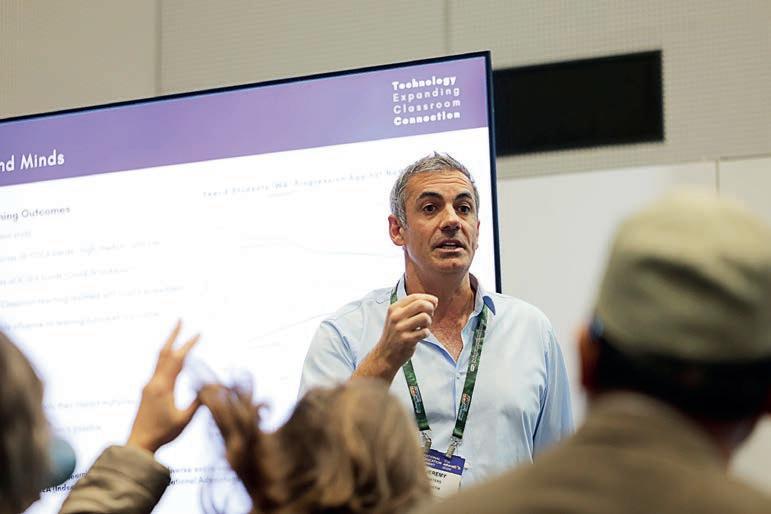
Summit Creative Director, Mrs Margo Metcalf. “We want to celebrate innovation in classrooms, whether it’s happening in Prep or in ear .
Presenting at the National Education Summit is more than a professional development opportunity it’s a chance to contribute to the collective growth of Australian education. Each accepted presenter receives complimentary registration for the two-day event including catering and a ertificate of ecognition. Co-presenters are also welcome and offered a discounted registration. Perhaps most importantly, presenting allows educators to amplify the impact of their work, extend their
professional networks, and position themselves as thought leaders within the sector.
As one past presenter re ected, t’s incredibly rewarding to now that the strategies we trialled in our school are now being adapted and used by colleagues in other states.”
What are organisers looking for?
Submissions will be reviewed based on three ey criteria
1. elevance to P education
. Potential to engage a professional audience
3. Practical application and/or research connections
While school-based educators and researchers are encouraged to apply, consultants and companies will only be accepted in partnership with sponsorship arrangements.
With spea ing positions filling quic ly in previous years, educators are encouraged to act early. he first round of submissions close on Wednesday October , with a second round closing on Wednesday December . A draft program will be published before the end of the year. EM
National Education Summit
Save the date
Brisbane: 14-15 May 2026
Melbourne: 3-4 September 2026
How to apply
Expressions of interest can be submitted online at www.nationaleducationsummit.com. au/call-for-presenters

“Brett
Salakas's session was very insightful and provided some great strategies and insights into the benefits and possibilities for the use of AI in school.”
Robert M., Department of Education, Victoria
Reflections on 2025: collaboration at its best he ational Education ummit in elbourne reinforced why it has
inclusive education practices, with expert-led sessions that were both thought-provoking and practical. I came away with a deeper understanding of how to better support diverse learners in my classroom, as well as a toolkit of resources that I can immediately apply and share with colleagues. The atmosphere was collaborative and inspiring, and I truly appreciated the opportunity to connect with passionate educators from across the country. I’m already looking forward to the next summit!”
– Vanessa F., Canberra Institute of echnology
“I absolutely loved the presentation by Ros Lugg. She presented scientifically grounded, real-world research on the learning challenges faced by students with dyslexia. In highlighting these challenges, she introduced an individualised program that has been shown to make a genuine difference for students. At last, a program that not only works but can also be effectively monitored and tracked.”
– Sally-Ann W., Victory Lutheran College

“The practical activities that Dale Sidebottom from School of Play involved us in were fantastic. I love PD that’s hands on, practical PD that I can take back to school and use straight away and share with my colleagues.”
– Robyn, Keilor Heights Primary
“The conference was an inspiring and energising experience. I thoroughly enjoyed the diverse discussions and the wide variety of presentations from Teacher Librarians, all of which were pertinent and highly relevant to our work. The program offered a fantastic array of up-to-date, futureready initiatives that are exciting for our learners, and I greatly valued the opportunity to engage with vendors who showcased innovative and current educational resources. The welcoming and engaging atmosphere created such a positive vibe, leaving me motivated and encouraged.”
– Virginia H., Shellharbour Anglican
An overseas sabbatical taught International Grammar School Principal Ms Shauna Colnan that leadership is learned, adaptive and collaborative. Her reflections o er valuable lessons for school leaders navigating change and complexity.
When Shauna Colnan undertook a sabbatical in her tenth year as Principal to spend time at the University of Cambridge, she immersed herself in the study of Transformational Leadership and Strategic Decision Making alongside leaders from around the globe. The experience left her with a wealth of insights that she believes are highly relevant to school leaders and teachers alike.
er first ey ta eaway challenges one of the most persistent myths about leadership: that leaders are born, not made. “Research shows that only around 30 per cent of leadership qualities are inherent,” she explains. “The remaining 70 per cent comes from socialisation and context. Leadership is about nurture, not nature. That means we can all develop as leaders and need to continue learning throughout our leadership journeys.”
The past few years have shown educators just how important adaptability is. Ms Colnan notes that while many educators have a preferred leadership style, the ability to shift approaches depending on circumstances is crucial. “The pandemic was a crash course in exibility, she re ects. As schools continue to face rapid change, leaders must be willing to expand and adapt their style.”
She also emphasises that leadership can and should emerge from anywhere within a school community. “It’s not always about the person with the title. I see it every day in teachers with innovative ideas,
or students with bold initiatives. Our responsibility as leaders is to nurture those sparks and create an environment where they can thrive.”
For Ms Colnan, leadership is inseparable from relationships. She advocates for engaging others meaningfully in decision-making, acknowledging their contributions and leading with kindness.
“Protecting and honouring the dignity of every individual is fundamental,” she says. “When people feel valued and respected, the whole organisation benefits. his extends to cultivating friendships and collegial connections at work.
“Having friends at school – whether as a teacher or a student – makes a significant difference to wellbeing and performance. It’s something leaders should actively encourage.”
Change management is another area where insight is essential. About per cent of organisational transformations fail,” Ms Colnan points out. “But frameworks exist to help. At our school we use Professor John Kotter’s 8 Steps, which guide us from urgency to embedding change in culture. This framework supported our implementation of our new deeper learning timetable for .
Another area of growth for s Colnan during her time at Cambridge was self-awareness – particularly around cognitive biases.
“We all fall into traps like confirmation bias or overconfidence. Recognising these patterns allows us to make more balanced decisions.”


Listening deeply is equally important, she notes. Ms Colnan urges leaders to practise genuine empathy, moving beyond surface-level exchanges to truly understand the perspectives of others. Active listening changes the quality of conversations. It builds trust and strengthens relationships. Schools are busy places. To really listen is a gift you can give your colleagues.”
Perhaps the most resonant theme from her re ections is psychological safety. “Creating an environment where people feel safe to make mistakes and know they belong is crucial,” Ms Colnan says. “High-performing schools thrive on it – and beyond performance, it’s simply the right thing to do.”
From Cambridge seminar rooms to the corridors of her own school, Ms Colnan has seen that leadership is not about titles or traits but about continuous learning, adaptability and the courage to create safe, inclusive environments. EM



La Trobe University researchers are calling on educators to share their experiences of teaching consent and respectful relationships to shape stronger national support.
Teachers are often at the frontline of delivering Relationships and Sexuality Education (RSE), covering topics such as consent, respectful relationships, and protective behaviours. Yet despite the importance of this work, many educators face the challenge of teaching it with limited training, inconsistent resources, and variable support. For some, this can mean feeling underprepared, vulnerable to community criticism, or uncertain about how to respond when students disclose sensitive experiences.

A new national research project, led by La Trobe University’s Australian Research Centre in Sex, Health and Society, aims to change that. By capturing teachers’ real-world experiences – what works well, what doesn’t, and what support would make a difference – the study hopes to create a stronger foundation for teacher confidence, professional development, and workplace support.
Professor Jennifer Power, who is leading the research, says the study is designed to put teachers’ voices at the centre of discussions about how RSE is taught in Australian schools.
“Teachers carry a huge responsibility in this area, and we know many would like clearer guidance, consistent training, and stronger support networks. This project is about listening to educators and using their insights to shape national recommendations.”
The study builds on earlier national surveys conducted in 2010 and 2018, but it also re ects how much has changed in the past decade. Schools
are now navigating new curriculum requirements, including mandatory consent education from Foundation to Year 10, as well as increasing concerns about the online environment.
For many teachers, these shifts have heightened the need for professional learning and system-level support. While RSE is vital for students’ wellbeing and safety, it can place teachers in difficult situations without adequate preparation. The research team hopes their findings will inform the development of a National Strategic Framework for an integrated approach to sexual health promotion – ensuring RSE is a supported, sustainable part of teachers’ professional practice.
How teachers can contribute
The project involves two complementary studies:
• A short anonymous survey (around 10 minutes) that explores how prepared and supported teachers feel when delivering RSE. This is open not only to practising teachers but also to pre-service teachers likely to deliver RSE in the future.
•In-depth interviews with teachers, health educators, and school leaders, providing deeper insights into the challenges and opportunities of teaching RSE. Both studies are open to participants aged 18 or older who are living in Australia. Teachers who take part in interviews will receive a $70 reimbursement for their time, with all participation ept confidential. While the ultimate goal of this research is to benefit students

through stronger, more consistent RSE, the immediate focus is on the professional experience of educators. By contributing, teachers and school leaders can directly in uence the supports and structures available across the system.
Professor Power stresses the importance of this input: “We know that RSE can be some of the most rewarding teaching educators do, but also some of the most challenging. By sharing your experiences, you can help create the kind of support that teachers really need.”
Findings from the study will feed into practical recommendations and policy development, including a proposed National Strategic Framework for sexual health promotion. Such a framework could provide schools with clearer guidance on RSE, more consistent training pathways, and stronger professional networks for teachers.

For educators, this represents an opportunity to make their voices heard and shape a more confident, sustainable approach to teaching consent, respectful relationships, and protective behaviours.
Teachers, health educators, and school leaders are encouraged to take part in the survey or register for an interview. By doing so, they not only support national research but also contribute to building a stronger, more supportive professional environment for all teachers delivering RSE. EM
Have your say
Complete the 10-minute anonymous survey: redcap.link/rseteacherssurvey. Register for a confidential interview (with $70 reimbursement): redcap.link/rseteachersinterviews. Both options close 31 December 2025.
Respect Collective's evidence-based digital RSE lessons are helping ACT secondary schools deliver one comprehensive resource across many di erent learning environments.
The Association of Independent Schools in the ACT (AISACT) represents a diverse group of 18 member schools, ranging from small alternative providers to large metropolitan campuses, with faith-based, secular, and boarding options among them. This diversity is a strength, but it also presents a challenge when it comes to ensuring all students receive consistent, high-quality consent and respectful relationships education.
With the Australian Government’s Consent and Respectful Relationships Education initiative (2024–2028) providing funding to independent schools through the AIS network, the opportunity arose to invest in an approach that could deliver evidencebased, developmentally appropriate, and teacher-ready resources across Years 7 to 12.
Enter Respect Collective – a team led by co-founders Dr Tessa Opie and s errin radfield, who bring expertise in health, wellbeing, and education design. Their task: to create a program that was exible enough to fit the diverse needs of A independent schools, but structured enough to ensure consistency of message and impact.
At the heart of Respect Collective’s approach is a digital, plug-and-play curriculum. Each year level receives five lessons in total from ear through Year 12 – mapped carefully against the Australian Curriculum: Health and Physical Education
(v9.0) and the UNESCO International Technical Guidance on Sexuality Education (2022).
Unlike guest speaker sessions or one-off seminars, Respect Collective’s curriculum is designed for teachers to deliver within their own classrooms. Lessons are sequential, building on the skills and knowledge gained in previous years. Importantly, teachers can determine the pace of delivery, allowing them to align lessons with broader wellbeing initiatives, guest speakers, or school events. or Dr Opie and s radfield, teacher ease was a non-negotiable. “We heard time and again from schools that while they were committed to respectful relationships education, the practical challenge was workload. Teachers are already stretched, and too often, programs are either too rigid or too resourceintensive,” Dr Opie explains. “Our goal was to give schools a resource that is evidence-based, exible, and ready to deliver without hours of preparation.” s radfield adds, espectful relationships education shouldn’t be an add-on or a one-off talk. It needs to be embedded, consistent, and something students can engage with year after year.”
The program’s rollout has shown just how adaptable it is. Ms Kath Morwitch, Senior Manager of Curriculum and Professional Learning at AISACT, highlights that the resource is being
used effectively across very different school contexts.
“Our member schools are of different types, sizes, religious affiliations and educational philosophies and represent a range of approaches to teaching and learning. Each has different values and approaches to wellbeing, yet those involved have been able to take this program and use it effectively. That adaptability has been crucial.”
The value has also extended well beyond Canberra. Respect Collective is now being implemented across metropolitan and regional communities in Victoria, South Australia, Queensland, and Western Australia. Early feedback suggests the model is equally powerful in rural and regional schools, where access to external experts is often limited.
In some contexts, the program has also been reviewed for cultural responsiveness, ensuring that lessons are sensitive to local needs and student populations. This balance – consistency of framewor with exibility of delivery – is key to its success.
Perhaps the strongest endorsement comes from schools and teachers on the ground.
Canberra’s Galilee School, a registered independent school for disengaged and vulnerable young people in Years 7–12, implemented Respect Collective’s program in 2025. For a school community where reengagement with learning is the central focus, the results have been striking.

t is rare to find a program such as this that can be implemented without significant modification and ad ustment to our setting,” says Ms Lisa Hivers, Head of Teaching and Learning at Galilee. “We were impressed and greatly appreciated the chance to share this valuable learning with our students.”
Teachers, too, have seen the difference.
“The Respect Collective program was highly valuable for my students,” notes Ms Olivia Wells, a teacher at Galilee. “The structured and supportive approach meant they felt safe to engage, and the relatable scenarios allowed them to make strong connections with the issues being explored. I noticed a real growth in their understanding and vocabulary, particularly around recognising controlling, coercive, and abusive relationships.”
These outcomes are not isolated.
Across AISACT schools, students have responded positively, with increased confidence discussing complex issues such as consent, coercion, and respect in friendships and relationships. or teachers, the wor load benefit cannot be overstated. With lessons prepared and aligned to curriculum requirements, the burden of research and resource development is lifted. “That’s such an important point,” Ms Morwitch stresses. “Teachers are under enormous pressure. To have a program that is ready to go, yet still engaging and adaptable, makes a huge difference.”
Cost effectiveness and value
Alongside educational impact, the program’s affordability has resonated
strongly with schools. "At approximately $6 per student, the Respect Collective program is arguably the best value for money, offering a complete secondary school curriculum for a fraction of a school s wellbeing budget, s radfield says. "Some schools spend upwards of $4,000 on a handful of sessions for one year group. For a similar investment, Respect Collective provides a full, multiyear suite of lessons for every secondary year level."
“When schools realise that for just a little more, they can have 75 lessons that embed respectful relationships education across six year levels, the value becomes clear. It’s about making the money go further, but also ensuring consistency and quality," she adds.
While Respect Collective’s alignment with government policy and curriculum standards is critical, Dr Opie and Ms radfield are clear that their vision extends beyond compliance.
“Ultimately, we’re not just ticking boxes,” Dr Opie says. “We want to help shape a generation of young people who understand respect, consent, and healthy relationships as part of who they are, not just as something they learn for a test.”
That aspiration resonates strongly with schools like Galilee, where students are often navigating significant personal and social challenges. It also aligns with broader community calls for cultural change in how respect and consent are understood across society.
With some ACT schools now embedding Respect Collective’s program and Queensland schools showing
strong interest, Dr Opie and s radfield see potential for the model to spread nationally. Conversations with schools in the Northern Territory suggest that culturally responsive adaptations could extend the program’s reach even further.
For now, the focus is on supporting schools to implement the resource effectively, gathering feedback, and continuing to refine lessons. he program is living, s radfield explains. “We’re constantly learning from teachers and students, and that input helps us keep the resource relevant, engaging, and evidence-based.”
Ms Morwitch agrees: “Respect Collective supports the quality and consistency of respectful relationships education in our schools. It gives us confidence that every student, regardless of which school they attend, is receiving thoughtful, age-appropriate education that will make a difference in their lives.”
And as the positive feedback from students, teachers, and school leaders shows, this is not just another program to deliver. It’s a meaningful step forward in preparing young people to build respectful, safe, and thriving relationships – both in school and beyond. EM
Thinking about launching in 2026?
Respect Collective is giving schools a head start with free Term 4 access for their Wellbeing Team when they subscribe. Turn to their full-page ad in this issue for all the details.
Rochedale State High School’s Ms Cassie Day, one of six STEM teachers recognised in the 2025 Peter Doherty Awards, is transforming classrooms with collaboration, innovation and inclusive learning.
When Rochedale State High School’s Head of Mathematics Ms Cassie Day received the news that she had been named an Outstanding Teacher of STEM in the 2025 Peter Doherty Awards, her first thought was not about herself.
“It’s more than just recognition for me,” she says. “I see it as recognition of the amazing work that happens in our classrooms every day. t re ects the dedication of my colleagues and the curiosity and resilience of our students.”
That perspective – collaborative, humble, and deeply student-centred – has shaped Ms Day’s career across more than 15 years of teaching and leadership in Queensland schools.
From Warwick to Rochedale Ms Day began her teaching journey at Warwick State High School, before relocating to North Queensland. She
State High School in Townsville, then moved to Wellington Point State High School in Brisbane.
Four years ago, she took on the Head of Mathematics role at Rochedale State High School, a large co-educational secondary school on Brisbane’s southside with more than 1,600 students across Years 7 to 12.
The scale of her department is significant. here’s teachers that teach maths in some capacity,” she explains. “I oversee the curriculum, help shape the culture of the maths department, drive the agenda, and make sure that students are in classrooms learning.”
The role demands more than administration. Ms Day has become a leader in pedagogy, student engagement, and cross-school collaboration – qualities that placed her in contention for the state’s most
A collaborative STEM vision Ms Day’s Peter Doherty Award recognition grew out of her involvement in the Department of Education’s M in STEM program, which connects clusters of schools to collaborate on inquiry-based improvement projects in mathematics.
“I signed up our school and six other schools to work collaboratively on a project,” she recalls. “Through that, a colleague suggested that I nominate for the award. It wasn’t something that I had really thought about before.”
The project focused on applying practices from Building Thinking Classrooms, a framework for mathematics learning developed by Canadian researcher Peter Liljedahl. At its heart, it asks students to work in small groups on vertical non-permanent surfaces – typically whiteboards around the room – where they solve problems collaboratively.
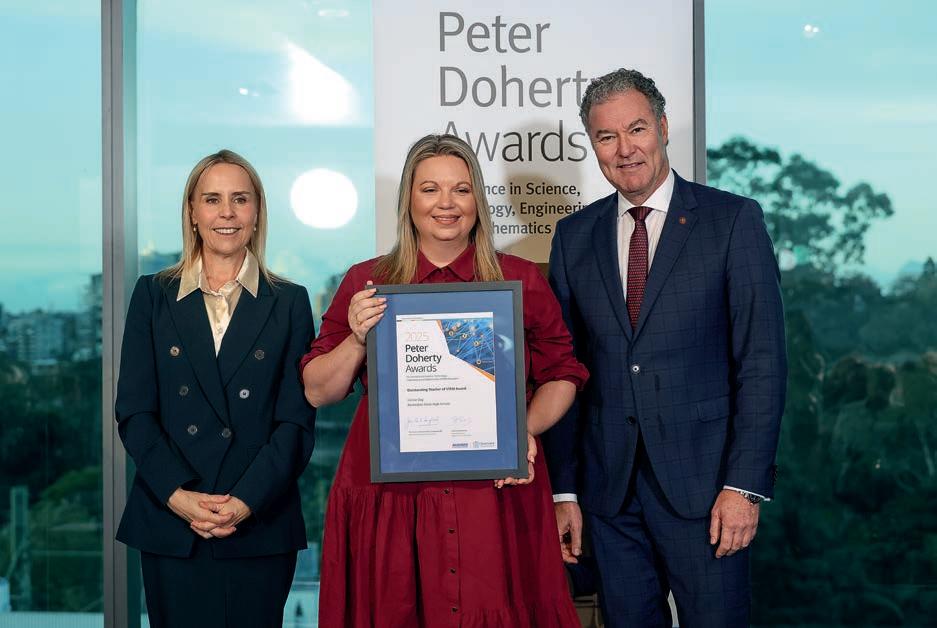
“They’re developing their critical thinking, communication, and problem solving skills while collaborating with one another which will benefit them in the workplace and further studies,” Ms
Rolling the approach out across seven schools required careful planning, shared professional learning, and collective commitment. But the outcomes quickly became evident.
“We’ve had an increase in students’ level of achievement,” she notes.
“We’ve also seen a decrease in the number of students being referred on for behaviour issues and there’s been an increase in effort and behaviour, as seen in the student report cards.”
For Ms Day, these improvements highlight how powerful STEM
pedagogies can be. “It’s been fun to pursue,” she says, with understated pride in the progress made.
Recognition and what comes next Recognition in the Peter Doherty STEM Awards, presented at Queensland niversity of echnology , confirmed the value of this work. Ms Day had been notified of her success by email, but the ceremony provided a chance to celebrate alongside fellow teachers and students.
he insists the honour re ects a community-wide effort. “I’m really proud to be a part of this community,” she says. “It re ects the dedication of my colleagues and the curiosity and resilience of our students.
Her students have shared in the excitement. “They have been congratulating me in class,” she says. “We hosted a maths competition last week where we had parents in attendance, and they congratulated me as well. It’s been quite lovely.”
Ms Day also sees the award as a platform for promoting STEM more broadly. “It’s really important that we build inclusive environments that empower people to go into STEM pathways, particularly girls and those in rural and remote areas.”
At Rochedale, the STEM program is well established and high performing. “It was important to value-add by offering
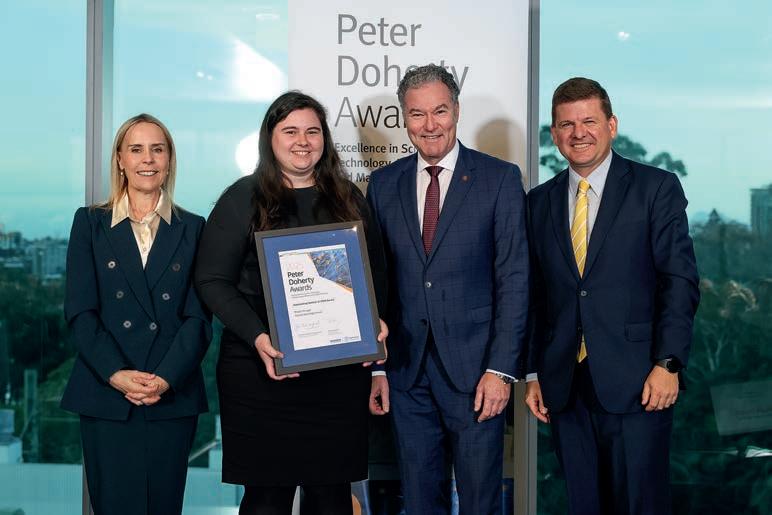
a different pedagogical approach.
Building Thinking Classrooms did that,” she explains.
The award may have recognised her past achievements, but s Day is firmly focused on the future. Rochedale State High School is currently investigating implementing a whole-school engagement strategy designed to motivate learners and encourage innovative teaching approaches
“We will continue to expand our work in Building Thinking Classrooms while incorporating other whole-school approaches to pedagogy,” she explains. “We want to continue to build on the growth we’ve made these last few years.”
For her personally, the motivation remains the same as when she first entered the classroom. “I just love that I can help students become more than what they thought possible, she re ects.
Her work at Rochedale demonstrates how innovative strategies like Building Thinking Classrooms can transform both learning and behaviour. Her recognition in the Peter Doherty Awards affirms the impact of a teacher who consistently places students and colleagues at the centre of her success.

As she sums it up: “It’s been an incredible honour to receive the award. But really, it’s recognition of the amazing work that happens in our classrooms every day.”
The Peter Doherty Awards are named after a Brisbane-born, Nobel Prizewinning scientist who was educated at Indooroopilly State High School and The University of Queensland.
Each award carries a prize of $5,000, with a total prize pool of $140,000, to be used in pursuit of further STEM education or professional development. EM
Outstanding Teacher of STEM Awards
Cassie Day, Rochedale State High School
Elizabeth Stewart, Beenleigh State High School
Judith Stutchbury, Kalkie State School
Megan Scougall, Boonah State High School
Samantha Ephraims, Kalkie State School
Wendy Agnew, Indooroopilly State High School
Outstanding Rural and Remote Teacher of STEM Awards
Timothy Bateup, Roma State College
Outstanding STEM Support Officer Awards
Hilary Maloney, Proserpine State High School
STEM Education Partnership Awards
Boyne Island Environmental Education Centre
The University of Queensland
The full list of Peter Doherty Award winners for 2025 can be found at https://education.qld.gov.au/about-us/ events-awards/awards-competitions/ peterdoherty-awards-for-excellencein-STEM.
Nominations for 2026 will open in Term 1, 2026.
Educator Ms Katrina Dunne shares how the Dare to be a Rockstar program empowered her leadership and fostered a culture of wellbeing across her school community.
When Ms Katrina Dunne began her teaching career in 2006, she never imagined that nearly two decades later, she’d be leading a school community through a transformative wellbeing initiative.
Her journey – from upper primary teacher to principal, and now classroom teacher once again – has been shaped by a genuine commitment to staff and student wellbeing, and a pivotal partnership with mindset coach Ms Peta Jeppesen, founder of Beyond the Classroom Australia, through her Dare to be a oc star program.
Ms Dunne’s leadership story is rooted in regional Queensland, where she taught across a range of settings including the School of Distance Education, Charleville State School and t ary’s chool in harleville. t was at St Mary’s that she reconnected with Ms Jeppesen, who had once been her principal and left a lasting impression.
“She really stood out to me,” Ms Dunne recalls. he put staff wellbeing at the forefront of everything she did. ’d never seen that before.
As Ms Dunne stepped into leadership roles, including a deputy position within the Western Alliance – a unique collaboration between distance education schools across Charleville, ount sa, and ongreach she began to see the potential of Ms Jeppesen’s wor beyond her own development.
nitially, s Dunne engaged in the Dare to be a Rockstar program for personal growth. ’d turn up to those sessions feeling li e didn’t have time, she admits. ut ’d always leave
feeling more equipped. t helped me navigate courageous conversations and lead with calm and clarity.
One such conversation centred on a long-standing leadership challenge within the school. With careful guidance, the issue was approached with empathy and strategic insight. he outcome was a difficult but honest dialogue in which the individual came to recognise that the role had become unmanageable, and that the current structure was having a broader impact on the school.
Recognising the program’s impact, Ms Dunne introduced Dare to be a oc star to her entire staff. he program, tailored by Ms Jeppesen to meet the specific needs of the school, quickly gained traction – even among the most sceptical. One school officer who was completely anti anything touchy-feely’ came to me and said, ’m really enjoying what you’re doing with us’. hat was huge.
The initiative brought a renewed sense of energy and trust to the school culture. People felt valued when they could be vulnerable,” Ms Dunne explains. t created a safe space for that. he program’s success with staff inspired Ms Dunne to extend it to students, launching a pilot with Years to . We only had months, but it was powerful. Peer voice and peer-led sessions made a real impact.
Now based in Toowoomba, Ms Dunne has taken a step back from leadership to support her daughters’ transition to high school. he’s currently teaching ear on a short-term contract, but her passion for wellbeing in

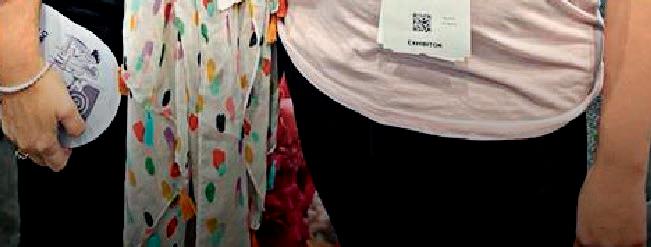
education remains strong. ’d absolutely love to see more schools adopt Peta’s program, she says. We hear a lot about wellbeing being a priority, but we don’t always see it in action. his program is a long-term solution – not just a chocolate in the pigeonhole.
s Dunne’s re ections are grounded in experience across both public and Catholic sectors, and a clear-eyed view of the evolving challenges in education. ociety has changed. hildren are different. he expectations on teachers are bigger than ever. We need programs li e this.
For Ms Dunne, the essence of Dare to be a Rockstar lies in its emotional intelligence and authenticity – qualities she saw in Peta from the beginning.
“You don’t remember what people say or do, but you remember how they made you feel, she says. hat’s what this program does. t ma es people feel seen, supported, and strong. EM
For more information on Beyond the Classroom Australia’s coaching programs visit https:// beyondtheclassroomaustralia.com. au/programs/
Felton Industries’ new sheltered grandstands deliver safer, more inclusive and customisable spectator seating for schools and sporting clubs across Australia.
Felton Industries has launched its new Sunsafe Select and Sunsafe Comfort sheltered grandstand range, designed to lift comfort, safety, and inclusivity for spectators across Australian schools, clubs, and community venues.
The Sunsafe sheltered grandstands are engineered for all weather conditions and offer seating for up to 60 people, with protection from harsh UV rays and improved access. Enhancements include wider footwells, additional length options, and new accessibility configurations to better meet varied site and community needs.
“Inclusivity, structural integrity, and climate adaptability were central to the development of this range,” said Mr Simon Clayton, product marketing manager at Felton Industries.
“Our customers are increasingly looking for outdoor seating that both protects their communities from the elements and meets evolving safety and certification requirements. his range answers that need, with options
to suit both standard and high-wind regions, plus exible si ing and wheelchair accessibility.”
Available in four-metre and six-metre versions, the range now includes integrated guardrails for added structural integrity and user safety. he six-metre model features extended batten-style shelter supports and is bolt-fixed to the ground to resist high winds.
For regions with stricter compliance requirements such as coastal Queensland and parts of Western Australia elton also offers an optional Wind -certified version. All configurations are structurally certified, re ecting elton’s emphasis on quality, compliance, and long-term performance in public spaces.
A key point of differentiation is the wheelchair-accessible configuration, which provides a dedicated cut-out space to accommodate wheelchair users without compromising comfort, visibility, or safety.
Across the range, marine-grade

The sheltered grandstands o er seating for up to 60 people.
aluminium construction delivers a weather-resistant, low-maintenance, and rustproof solution suited to Australia’s diverse climates.
The grandstands have been engineered without structural poles embedded in the seating area, maximising usable space and spectator comfort. Wider footwells improve circulation, helping spectators enter and exit easily and reducing contact with the seat or knees of the person in front. A new stairwell option is also available on selected Comfort models to further enhance access where required.
Schools and clubs can align their seating with their identity via customisable frame, guardrail, and end cap colours, available in red, blue, green, yellow, orange, and purple. For safety and longevity, the seating planks remain uncoated (metallic silver standard).
Designed and manufactured in Australia, the range continues Felton ndustries’ reputation for delivering safety, quality, and community value. Felton is ISO9001 accredited and an Approved Local Government Procurement Supplier, with more than 20 years supplying Australianmade premium aluminium outdoor furniture including grandstands, tiered seating, bench seating, tables and chairs, shelters, bin enclosures, and change room furniture for schools, parks, councils, clubs, and organisations nationwide. EM
Pricing starts at $17,999, with further product information available at https://felton.net.au/productcategory/grandstands/.


Dr Stephen Brown, Managing Director of The Brown Collective, explores how leadership ‘wounds’ can transform identity and purpose, urging leaders to embrace humanity, resilience, and multiple identities.

Dr Stephen Brown is the Managing Director of The Brown Collective, focused on the formation of educational leaders and partnering with schools, networks and system to enable sustainable impact. The organisation reflects both his collective experience over 40 years in policy, strategy and leadership development – and that of the remarkable global network he has developed during this career.
Ernest Hemighway once said, “In our darkest moments, we don’t need advice.” What we truly need is presence, someone to sit with us in the shadows, to acknowledge our suffering without trying to fix it. In those moments, silence and understanding speak louder than words, offering a quiet strength that reminds us we’re not alone. It’s not solutions we seek, but connection. It’s a Saturday morning in a busy, bustling city. I am sitting across the table in a coffee shop from a friend, a person who I admire as a talented, dynamic, intelligent education leader. She is ashen faced, sad and emotional. Why? A few days prior she was informed that despite her awless performance her contract of employment would not be renewed. Her departure was reported in the media, and the maelstrom had begun – stories, gossip and a wonder about the truth. I simply listened. She had dedicated a significant part of her life to her work, successfully leading with colleagues’ major reforms and initiatives. Now she was suddenly feeling abandoned and a great sense of hurt in icted by decision ma ers who simply saw her as expendable – a chessboard piece in a broader political game.
Richard H. Ackerman and Pat Maslin-Ostrowski (2002) in their text, The Wounded Leader: How Leadership Emerges in Times of Crisis note that the ‘wounding
experience’ of a leader triggered by public criticism, betrayal and or systemic failure can deeply wound a leader’s sense of identity and integrity. These wounds are not just professional and existential. hey also suggest that rather than being purely destructive, these crises can become catalysts for transformation. eaders who re ect on and learn from their metaphoric wounds often emerge with a deeper understanding of themselves and their purpose. This is not always the case. adly, have seen first-hand the real and personal impact on people of the callous and inhumane decisions made in workplaces. In some cases, this impact is long lasting and at the extreme resulting in debilitating mental, physical illnesses and even suicide. Some of these stories make their way into the public domain throughs media, court cases and within the protected privilege of parliament. Most do not and remain in the darkness left with the individual(s) to repair, regroup and reinvent their careers and restart their lives. I often hear people say they cannot be away from their workplace, their school, due to a sense that they are indispensable.
Huma Abedin, Hillary Clinton’s former private aide in her 2021 memoir entitled, Both/And A Life in Many Worlds cites the words of Charles Dickens from Great Expectations to re ect on the
personal and professional challenges she has faced in her life:
“Suffering has been stronger than all other teaching, and has taught me to understand what your heart used to be. I have been bent and broken, but – I hope – into a better shape.”
We all have a professional profile and identity typically attached to a role – school principal, leader of curriculum, chief executive officer, deputy principal, area supervisor and so on. In leadership it is important to discern who you are, what you value and what you care about. Such conscious deliberation and contemplation give rise to a leader’s why, their purpose. However, all of us have multiple identities, a multiple mix of personal and professional roles we manage as we undertake living our lives. In my friend’s case, she is someone’s daughter, a wife, a mother of four children, an aunty, a musician and so on. She is like most leaders so much more than others may see her. She like the rest of us loves, laughs, cries, cares, has fears and self-doubt.
Our self-representation consists of multiplicity. The contrasting cognitive behaviours we possess are merely because we do not have a singular selfidentity that fully governs our thoughts, values, and emotions. There are multiple identities inside each one of us. Inside of adopting the view of a person as one whole self, everyone can be considered a range of distinct but related identities (Institute of Mangers and Leaders, 2023). This is important to remember when leaders are working with others, considering decisions and preferences that we adopt when responding to problems of practice. We need to acknowledge and leverage multiple identities in our workplaces.
In leadership we must also remember to separate ourselves from self and role. Heifetz and Laurie (2017) in their text, Leadership on the Line, note that the roles we play in our organisations, community and in our private lives are mainly dependent on the expectations of the people we interact with and who surround us. They contend that the self relies on our individual capacity to
"Others sometimes confuse our professional identity or persona as who we are – the real us."
witness and learn throughout our lives; to refine the core values that orient and inform our decision making and whether they conform to expectations.
What does this mean for our leadership practices to enable us to sustain ourselves and enable us to thrive in our roles? To continue to be compassionate, curious, positive and hope-filled in the pursuit of shared aspirations? We need anchors that keep us centred, supported by sanctuaries, special places or experiences that ta e us back to who we are and renew us (Heifetz and Laurie, 2017).
In leadership it is important to discern who you are, what you value and what you care about, writes Dr Stephen Brown.
The most beautiful people we have known are those who have known defeat, known suffering, known struggle, known loss, and found their way out of the depths. These people have an appreciation, a sensitivity, and an understanding of life that fills them with compassion, gentleness, and a deep loving concern. Beautiful people do not just happen (Elizabeth Kubler Ross).
My friend is a beautiful, gentle person, a loving daughter and a wonderful mother. Her professional gifts will continue to be shared in organisations and contexts who care about people. Others sometimes confuse our professional identity or persona as who we are – the real us. When leading others remember to ask them about their many identities and when you do you will be a better leader. EM




Courageous conversations define school leadership – but they can drain us. Former principal and guest speaker Mr Andrew Murray explains why wellbeing isn’t optional and how simple resets help leaders stay present and lead with care.
Every school leader knows the moment. You’re about to walk into a conversation you’d rather not have. t could be a difficult parent, a staff con ict, or a performance conversation you know won’t be easy. ou ta e a breath, open the door, and step in.
Andrew Murray is a leadership and sta wellbeing strategist across New Zealand and Australia. A former secondary school principal, he partners with leaders to build data-driven wellbeing frameworks. His work integrates Te Whare Tapa Whā with Harvard’s flourishing model. He lectures at BBI, hosts the Well.I.Am podcast, and is completing PhD research.
These are the moments that shape leadership. ot the assemblies, not the awards nights, not the photos in the annual report. he real test is in courageous conversations where trust is stretched and truth needs to be spo en. hey matter, but they also take something out of us. on ict is part of leading a school. People bring different views on teaching, expectations, relationships, and priorities. A courageous conversation isn’t about winning. It’s about naming what matters when silence would be easier. Every one of these moments is a turning point. Without care, they drain us and leave scars on the school community. With care, they can build trust and open the door to growth. This is where wellbeing, and the idea of ourishing, becomes central.
If we don’t reset after hard conversations, the strain spills over.
A teacher loo ing for encouragement might get impatient. A student who needs calm may get a clipped response. Even families at home can feel it when we haven’t left the last meeting behind. The load doesn’t stay in the office it travels into classrooms, staffrooms, and playgrounds.
I remember one afternoon as a principal when carried the intensity of a tough parent meeting into my daughter’s soccer game. I was there in body but not in spirit, still replaying every word in my head. It was a wakeup call. nless learned to reset, wasn’t just short-changing myself. was short-changing the people who mattered most. Many leaders describe this as “death by a thousand cuts.” One conversation doesn’t break you, but the accumulation does. And when it does, trust slips, energy fades, and the ourishing of the whole school suffers.
This is why wellbeing isn’t an optional extra. t’s part of the ob. If courageous conversations are unavoidable, then recovery practices are essential. imple rituals can help. hree deep breaths before leaving the meeting room. A short re ection to close one encounter before opening
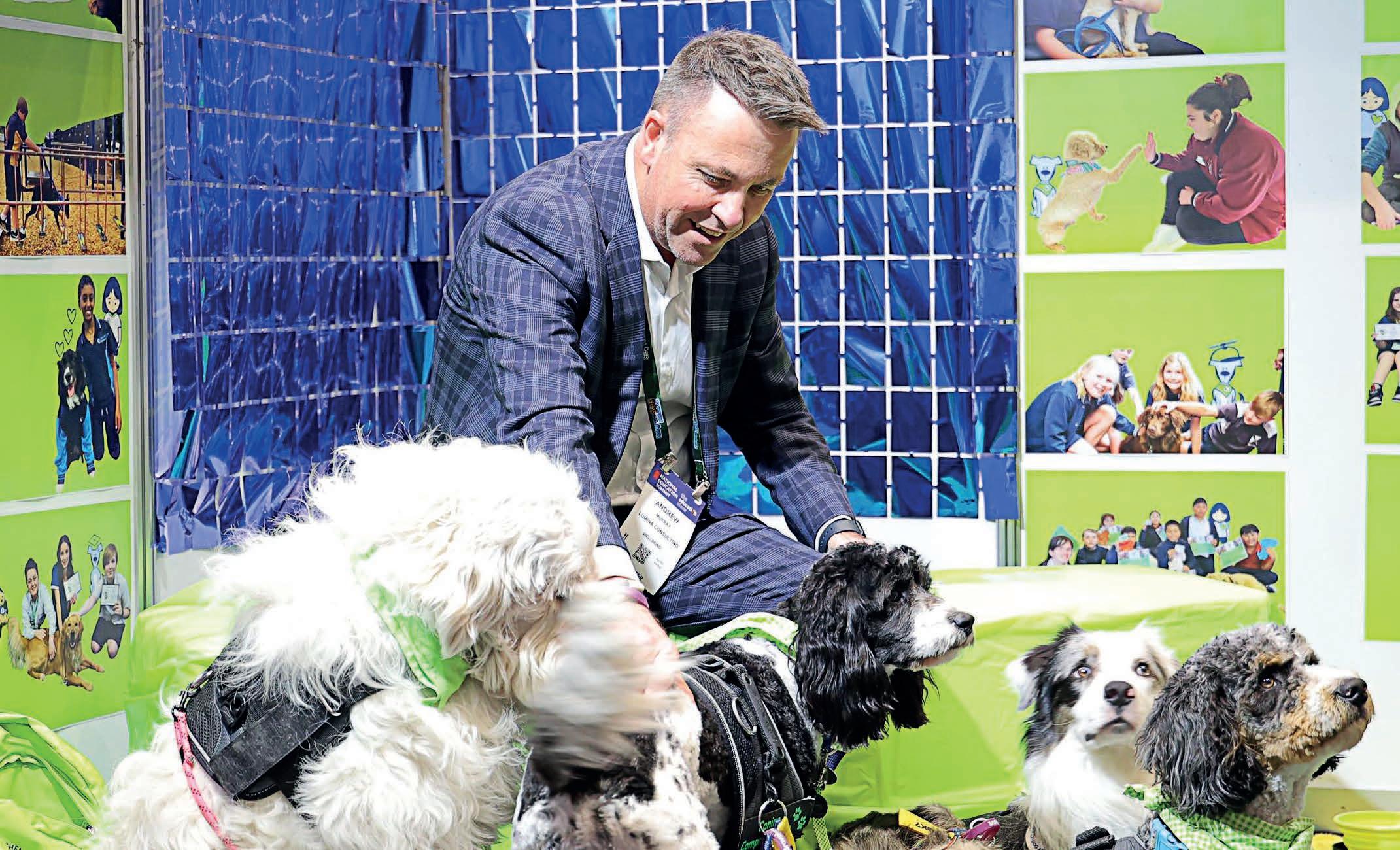

the next. A wal across the playground to clear your head. A few minutes of quiet at the start and end of the day.
One principal now ta es two minutes of silence before every board meeting. “I wal in less reactive, more grounded, she told me, and the meeting goes differently because of it.” These are not fads. They are practices that protect presence. hey ensure that the next person who wal s into your office meets a leader who is steady and attentive, not someone weighed down by the last meeting.
Too often we talk about wellbeing as if it’s just about surviving stress. But the deeper goal is ourishing. lourishing means leading with purpose, nurturing relationships, and creating conditions where others can thrive too. When leaders treat wellbeing as core to leadership, courageous conversations stop being moments to endure. They become chances to show honesty with care, to build trust through truth, and to remind staff and students that even difficult conversations can be held with dignity.
This is the heart of it: courageous conversations are not about
confrontation. They are about care for the relationship, for the community, and for what is right. But courage without care is brittle. A leader running on adrenaline might win the point but lose the ability to eep leading well. eal courage is spea ing the truth while staying whole enough to lead with grace afterwards. That wholeness is what eeps schools healthy.
The leaders who handle courageous conversations best are those who practise presence. hey now leadership is felt in the corridor, on playground duty, or in a passing word outside the classroom. If you carry the residue of a boardroom clash into a classroom visit, you risk undermining a teacher who needed encouragement. eset, arrive present, and that same visit becomes a moment of affirmation. Presence is contagious. t sets the tone for how safe, hopeful, and ourishing a school feels.
Courageous conversations are not interruptions to leadership. hey are part of its fabric. he question is not whether we will have them, but whether we will have them in ways that protect our
wellbeing and create schools where staff and students can ourish.
The test of a courageous conversation isn’t ust the words spo en in the room. t’s the presence you carry into the next one. f we carry tension forward, it multiplies. f we reset, we model calm and grounded leadership. That is how courageous conversations move beyond moments of con ict and become moments that help whole communities to ourish.
Choose one small ritual you can use this week to reset after a hard conversation. It might be writing down three words to describe how you feel, ta ing a short wal , lighting a candle this is a really good one in special character environments or simply pausing for a minute of stillness before stepping into the next interaction. he practice doesn’t need to be complicated, but it does need to be intentional. Over time, these small resets protect your wellbeing and create the presence that helps your whole school to ourish. EM
HP Education Ambassador Mr Brett Salakas explores how educators can navigate the AI gold rush, avoid opportunists, and identify trustworthy voices shaping the future of learning.

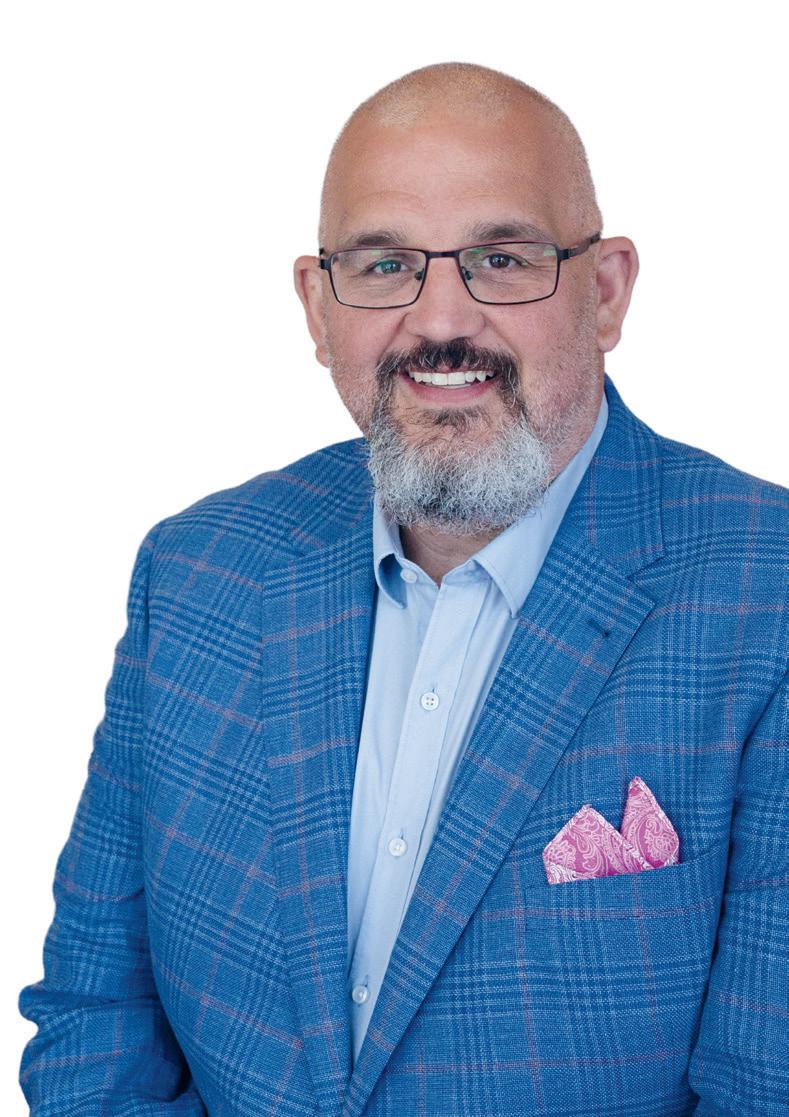
Mr Brett Salakas, HP Education Ambassador, is a global keynote speaker, best-selling author of A Mammoth Lesson: Teaching in the Digital Age, and founder of #aussieED. A leading voice on LinkedIn in K-12 Education, Mr Salakas was named Australia’s Most Influential Educator (2024) and recognised globally as one of education’s top 100 leaders.
Step into any staffroom or scroll through your social media feed and you will see a new wave of selfappointed AI experts appearing almost daily. Some are wellintentioned but inexperienced. Others are opportunists chasing speaking fees, consultancy gigs, and attention. They are quick to add “AI” into their bios and offer miracle solutions to problems that cannot be solved overnight. For schools and teachers trying to navigate this rapidly changing landscape, the danger is not just in being overwhelmed by the volume of voices but in placing trust in the wrong ones. Education has been here before with shiny technologies that promised transformation but delivered disappointment. This time the stakes are higher because the tools are more powerful, the ethical concerns more pressing, and the consequences for children’s learning and wellbeing far more profound.
In the midst of the noise, it is worth identifying who we can genuinely trust. n Australia, two figures stand out above the rest. Professor Genevieve Bell is a cultural anthropologist and technologist whose career has consistently sat at the intersection of people, ethics, and technology. After years at Intel shaping the future of computing, she now leads the School of Cybernetics at the Australian National University. Bell’s strength is her ability to frame technology in human terms. She does not chase hype or exaggerate potential; instead she draws on cultural
history and rigorous research to ask the right questions. What do we want technology to do for us? What do we want to preserve about humanity as we move forward? These are questions that matter deeply in education. Alongside her stands Professor Toby Walsh, Scientia Professor of Artificial ntelligence at W Sydney and a leading researcher with global credibility. Walsh is not afraid to call out exaggerated claims about AI, nor does he downplay its risks. His writing and speaking consistently stress the importance of evidence, accountability, and careful governance. He was one of the earliest voices warning about the dangers of autonomous weapons and has long argued that AI must

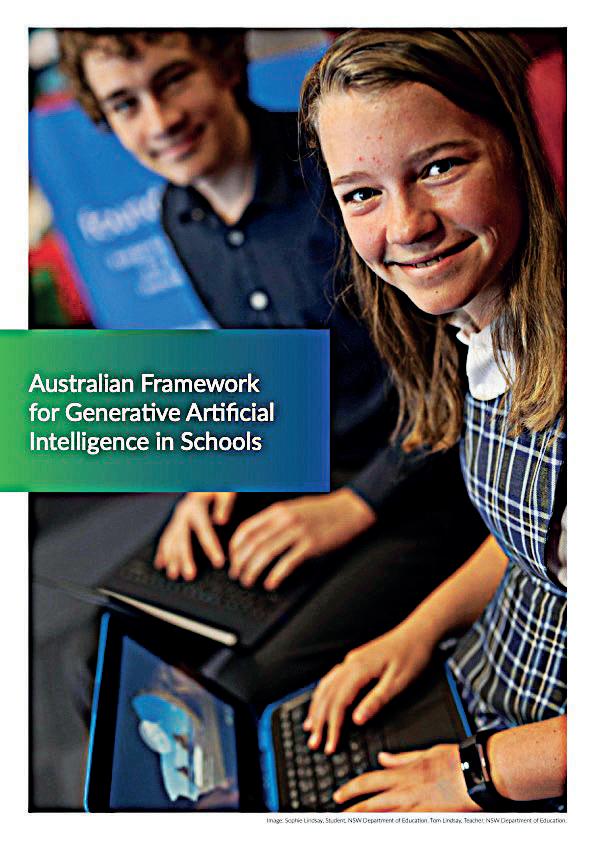
serve society rather than dominate it. For educators, this combination of technical depth and social conscience is invaluable. When Walsh or Bell speak about AI, they do so with decades of expertise and a genuine commitment to the public good.
But following trusted individuals is not enough. We also need to anchor ourselves in the right documents and frameworks that can guide national and local decisionma ing. Among the ood of papers, reports, and corporate whitepapers, three stand out as essential reading for educators who want to cut through the noise and make thoughtful choices.
he first is the Australian Framework for Generative Artificial Intelligence in Schools. This document sets the benchmark for responsible adoption. It recognises both the potential and the risks of AI, emphasising principles of safety, equity, and responsibility. It urges schools and systems to avoid rushing headlong into implementation without clear guardrails. The framework provides a roadmap that ensures students are protected, teachers are supported, and communities are reassured. Importantly, it positions A not as a quic fix or a replacement for human teaching, but as a tool that can be integrated thoughtfully into existing practices. For school leaders, it is a foundation stone that must not be ignored.
The second key document is known as Study Buddy or Influencer, a federal government initiative that deserves more attention than it has received. While it might sound like just another resource, Study Buddy or Influencer contains a critical insight: the warning that Australia cannot afford to let each education jurisdiction or sector go its own way when it comes to AI. Fragmentation risks leaving students with unequal access and creating an uneven patchwork of experiences. Study Buddy calls instead for a coordinated national approach. This is about more than efficiency it is about equity. If one state charges ahead with AI tools while another lags behind, the digital divide will widen. If some schools have robust safeguards and others do not, children will be placed at risk. Study Buddy
The rise of AI in education will not be a short-lived trend.

reminds us that the opportunity is national in scale and that by working together we can ensure AI supports all young Australians, not just a privileged few.
The third document is of a very different character. Antiqua et Nova is one of the few pieces of research in the AI and education space that is not shaped by corporate interests. Too often reports about AI in classrooms are published by companies with a vested interest in promoting their own products. The result is research that reads like marketing. Antiqua et Nova stands apart because it is driven by a deep humanist concern rather than by sales targets. It is about how we preserve individuality, protect children, and sustain the unique human dimensions of learning. It asks difficult questions about what is lost if we outsource too much of education to machines. It speaks to the importance of childhood, creativity, and the irreplaceable role of teachers. n a field often dominated by techno-optimism, Antiqua et Nova brings balance and conscience.
Taken together, these three documents form a kind of compass.
The Australian Framework for Generative Artificial Intelligence in Schools provides a north star of policy and safety. Study Buddy warns against fragmentation and points us towards collective action for equity. Antiqua et Nova reminds us of the deep human values we must hold onto no matter how powerful the technology becomes. If educators ground themselves in these texts, they are far less likely to be swept away by the noise of self-proclaimed experts.
This is not to say schools should become paralysed by caution. There is real potential for AI to reduce workloads, to personalise aspects of learning, and to help teachers focus on what matters
most. But the path forward requires wisdom and discernment. It requires filtering out the grifters who spea with confidence but without depth. t requires listening to scholars who have spent their lives building credibility and whose loyalty lies with people rather than profit. Above all, it requires remembering that education is about children, not markets.
The challenge for every teacher, principal, and policymaker is to slow down just enough to ask the right questions. Who is telling us this? Why are they saying it? What evidence backs it up Who benefits if we adopt this idea f the answers circle bac to profit rather than people, caution is warranted. If the answers are rooted in research, humanity, and a vision of equity, then we can move forward with greater confidence.
The rise of AI in education will not be a short-lived trend. It is a structural shift that will shape classrooms, assessment, pedagogy, and curriculum for decades to come. That makes discernment more urgent than ever. This is not the time to be da led by in uencers or to follow the loudest voice in the room. It is the time to stand on the shoulders of those who have proven themselves trustworthy and to anchor ourselves in documents that put children and teachers first.
So beware the grifters. Beware the sudden experts who appear overnight with big claims and little substance. Instead, listen to those who have earned our trust over decades of careful work. Trust the guidance of Genevieve Bell and Toby Walsh. Trust the documents that have been crafted with care, collaboration, and conscience. The future of education is too important to leave in the hands of opportunists. It belongs to those who lead with wisdom, integrity, and humanity. EM
Mr Peter Buckingham, Co-Founder and Managing Director of Spectrum Analysis Australia, explains why data-driven planning – not guesswork – is essential for schools navigating growth, enrolments, and strategic investment in 2026.
When making strategic decisions for your school, do you start with facts and data, or do you rely on assumptions and gut feeling? In this day and age, hoping for the best is not a strategy. Data is available to answer most of your questions in a factual manner, and if schools cannot use facts and data in their planning, what message does that send to students?
Principals, business managers and directors are highly educated, often with advanced degrees, and are entrusted with the long-term future of their schools. Decisions should be grounded in evidence, not emotion or the old wet finger in the air approach. The stakes are high: multi-milliondollar building programs, staffing, and sustainability all depend on accurate forecasting.
There is a wealth of information available to assist in these decisions, much of it free, but the challenge lies in ma ing it usable. Every five years, the Australian Bureau of Statistics (ABS) conducts a Census, the most recent in August 2021. Over the following years, data sets are released that include population by gender, age, ethnicity, income, religious affiliation, and schooling trends. This becomes the starting point for the next fiveyear cycle.
Population forecasts are another critical resource. The ABS released its latest projections in October 2024, covering 2022 to 2032, and these have been extrapolated to 2037. These forecasts break down by gender and age groups, including 0–4, 5–9, 10–14, and 15–19, which are essential for schools. For example, the Austral–Greendale area in New South Wales is
forecast to increase by around 13,300 school-aged students between 2025 and 2037, representing a 580 per cent increase for children aged 5–18. This level of growth has enormous implications for enrolment planning, staffing, and infrastructure.
Socio-economic data is equally important. The SEIFA index, based on Census data, provides a comparative score for every area in Australia, indicating relative advantage or disadvantage. The national average E A score is , with af uent suburbs like Double Bay or Toorak scoring near 1200, while some regional areas fall as low as 600–800. This metric is a far better indicator of a community’s capacity to pay school fees than average household income.

planning for the future.
"When setting up a strategic plan, demographic forecasts should be your starting point. You may believe that population growth will drive enrolments and that families can a ord your fees, but can you present this as a solid, sustainable case to your board?"
Annual data from ACARA and the MySchool website adds another layer of insight. These sources track enrolments, staffing, and parent contributions over time. Consider one independent school in a high-growth area: enrolments have surged from 169 students in 2008 to 1,639 in 2024 – an increase of nearly 870 per cent. Year-
When setting up a strategic plan, demographic forecasts should be your starting point. You may believe that population growth will drive enrolments and that families can afford your fees, but can you present this as a solid, sustainable case to your board? Many schools are committing to major capital works based on projected growth. Without robust data, these investments risk becoming liabilities. Conversely, accurate analysis can reveal opportunities – such as opening a new campus or expanding programs –before competitors act.
Good data underpins good decisions. Whether you build internal capability or engage external experts, the goal is the same: transform raw data into actionable insights. At Spectrum Analysis, we specialise in demographic analysis and mapping for schools, providing reports and interactive tools that keep your planning current. In 2025 and beyond, hope is not a strategy. Data is. Use it to secure your school’s future. EM
Adjunct Associate Professor Misty Adoniou explores ChatGPT’s role in classrooms and why its rise challenges educators to rethink what authentic writing really means.
I’ve been thinking about this article for days now. Not constantly, not every minute of every day, but the thoughts have been bubbling away in the background – while watching TV, drifting off to sleep, reading research, or even chatting with a stranger on a shuttle bus. The question is simple: Can ChatGPT teach our kids to write?
Curious, I asked ChatGPT what it would write. Without hesitation, and certainly without the human angst over tone, clarity, or accuracy, it produced a fully formed essay in less than a second. It began: “The rise of AI-generated writing tools offers both opportunities and challenges for teachers supporting students’ writing development. Understanding these can inform wise, balanced classroom use.
Technically correct, but utterly ordinary. he lac of human angsting shows. The essay followed the exact formula we teach in schools: restate the question, present three arguments for, three against, and conclude by repeating the introduction with more conviction. It even used the predictable signposts –firstly, secondly, thirdly for opportunities, and however, additionally, finally for challenges. Neat, tidy, and lifeless. Ironically, it would probably earn an A.
So why would a student spend hours crafting a five-paragraph essay when ChatGPT can churn out the same banality in seconds, with awless spelling and punctuation? This is the uncomfortable truth: AI hasn’t broken writing instruction; it has exposed its emptiness.
Educators worry about plagiarism, laziness, and the erosion of critical thinking. Researchers warn of declining

re ection s ills. et other studies highlight benefits improved spelling and coherence, especially for English learners, and timely, individual feedback. Teachers appreciate the time saved on preparation. But the real issue isn’t AI – it’s us. For years, we’ve rewarded formula over thought, structure over substance. Unsurprisingly, AI excels at this because it mirrors what we’ve taught.
When headlines lament declining writing skills, the assumption is that kids can’t write. They can. NAPLAN data shows Year 3 students perform well. The decline begins in Year 5 – precisely when we start teaching them to write like machines. Long before ChatGPT, NAPLAN feedback urged schools to stop teaching formulaic responses and start teaching purpose, audience, and voice. In 2019, Queensland’s curriculum authority pleaded with teachers to help students engage with big ideas and write with intent. Yet classrooms remain obsessed with templates. Structure trumps meaning, heart, and even logic. The result? Writing that is neat but soulless – just like AI output. We’ve trained the algorithm in vapidity, and now it’s spitting it back at us with lightning speed.
So, what now? AI isn’t going away. he challenge is to define its role. The simplest way is to distinguish between text generation and writing. Text generation is functional: a sports carnival roster, a sunhat policy, a list of affixes, an annotated bibliography. These tasks require no originality – AI can handle them brilliantly. Writing, on the other hand, is human. It’s intentional, creative, and personal. It
demands more than a clever prompt; it requires teaching. Students need to learn how to choose words, bend conventions, and develop a voice that resonates. Writing involves thinking, revising, and wrestling with ideas –processes no algorithm can replicate.
Currently, most school writing tasks are little more than text generation: practice essays on cats versus dogs, chapter summaries, or formulaic opinion pieces. If that’s all we expect, then yes – let AI take over. But if we want students to write with purpose and originality, we must rethink our approach. Imagine assignments that invite curiosity, argument, and authentic expression. Tasks that ask students to explore complex issues, craft narratives that matter to them, or write for real audiences beyond the classroom. These are the kinds of tasks that make writing meaningful – and impossible for AI to replicate convincingly.
Rather than banning AI, let’s use its arrival as a catalyst to reclaim writing as an art, not a formula. If the goal is text generation, let the machines do it. But if the goal is writing – real writing – leave it to the humans. The future of literacy depends on our willingness to teach students that writing is more than filling a template. t’s about shaping ideas, in uencing others, and leaving a piece of yourself on the page. That’s something no algorithm can do. EM
Ms Kate Von Rock, an arts educator specialising in creative programs that support young people’s learning, wellbeing, and personal growth, says art education matters now more than ever.
In a Tasmanian classroom, a teenager worked quietly before her canvas, brush moving across the surface. The class passed without her noticing. She was completely absorbed in watching her idea come alive. Later she explained, “Painting made everything go quiet for a while. What she was describing is nown as ow state, the experience where concentration, creativity, and wellbeing coincide. For many young people, especially in today’s climate of social pressure and digital distraction, art classrooms provide one of the few spaces where ow can be found.
esearch confirms what students intuitively know, art education enriches learning well beyond the classroom. Peer-reviewed studies consistently show that participation in the arts improves cognitive exibility, problemsolving, and critical thinking, skills increasingly valued in workplaces shaped by rapid technological change.
euroscientific evidence highlights that making art strengthens neural pathways associated with memory, attention, and emotion regulation. hese benefits extend across learning, supporting academic achievement in all subjects. Equally important are the links between art and wellbeing. A 2022 review published in Frontiers in Psychology found that arts engagement significantly reduces stress and symptoms of anxiety, while increasing resilience and social connection. iven that one in five young Australians reports struggling with mental health each year, these benefits are not secondary. hey are essential. So why are we seeing less arts education in schools?
Art education also fosters identity and belonging, particularly relevant in a diverse, multicultural society. Studies in Australian schools show that culturally inclusive arts programs not only support First Nations storytelling and heritage but also encourage intercultural understanding among peers. This builds empathy, combats prejudice, and strengthens social cohesion, traits our communities urgently need. These outcomes also align with the Australian Curriculum’s general capabilities, which emphasise critical and creative thinking, ethical understanding, and intercultural awareness.

Teachers can also use art to support wellbeing and classroom culture.
Art education doesn’t need to be confined to the school art room. Integrating artistic practices across subjects can enrich learning and engage diverse learners. In literacy, students might illustrate scenes from novels or create visual poetry. In science, drawing diagrams or building models promotes spatial reasoning and conceptual understanding. History lessons can utilise role-play, costume design, or creating muralled timelines of historical events as learning tools. These interdisciplinary approaches not only deepen comprehension but also allow students to express knowledge in varied and creative ways.
Teachers can also use art to support wellbeing and classroom culture. Simple practices like starting
Many resources and professional development programs are available to support generalist teachers. Schools can also partner with local artists or cultural organisations to bring expertise into the classroom. These collaborations enrich the curriculum and connect students with their community. By embedding art into everyday learning, educators encourage creativity, engagement, and emotional literacy. In doing so, they create classrooms that are not only academically uncompromising but also fun, inclusive, and responsive to the needs of today’s learners.
As we prepare young Australians for an unpredictable future, art education equips them with timeless capabilities: creativity, adaptability, and courage. It is not a luxury subject but a critical foundation for meeting the educational, social, and cultural needs of Australia’s next generation. Supporting the arts in schools is not optional. It is an investment in young people’s minds, wellbeing, and collective future, now more than ever. EM
To list an event in our calendar, email rhiannon.bowman@primecreative.com.au
Earth Science Week 12–18 October ga.gov.au/about/earthscience-week
Australian International Education Conference (AIEC), Canberra 14–17 October aiec.idp.com
PAEDS ‘Beyond the Bedside’ conference 18 October, Melbourne, Victoria paedseducation.com.au

Media Literacy Week 24-31 October medialiteracy.org.au
World Teacher’s Day, Australia 31 October worldteachersday.edu.au
Montessori Convention (MIC 2025)
31 October –2 November, Sydney events.montessori.org.au/ mic/
National Recycling Week 10-16 November recyclingnearyou.com.au/ nationalrecyclingweek
Schools Spectacular 28–29 November, Sydney qudosbankarena.com.au/ event/school-spectacular

VCE and Careers Expo
30 April –2 May, Melbourne Convention & Exhibition Centre vceandcareers.com.au
Adelaide Careers & Employment Expo 7–9 May, Adelaide Showground careersemploymentexpo. com.au
National Education Summit 14-15 May, Brisbane Convention & Exhibition Centre nationaleducationsummit. com.au
Brisbane Careers & Employment Expo 28–30 May, Brisbane Convention & Exhibition Centre careersemploymentexpo. com.au
EduTECH Australia 3–4 June, Sydney International Convention Centre terrapinn.com/exhibition/ edutech-australia/index.stm
Perth SkillsWest Careers Expo
23–25 July, Perth Convention & Exhibition Centre careersemploymentexpo. com.au
Educate Plus International Conference
1–4 September, Brisbane Convention & Exhibition Centre educateplus.edu.au
NSW Secondary Deputy Principals Association 2026 State Conference
2-4 September, Western Sydney Conference Centre nswsdpa.asn.au
National Education Summit
3-4 September, Melbourne Convention & Exhibition Centre nationaleducationsummit. com.au

Welcome to People on the Move, Education Matters’ bulletin to keep the Australian education sector updated on new appointments and personnel changes.



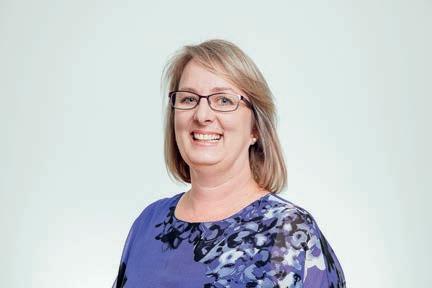

New Headmaster at the Shore
Sydney Church of England Grammar School (Shore) in North Sydney has appointed Dr Peter Miller as its new Headmaster, commencing in January 2026. Currently Principal of Geelong College, Dr Miller has extensive experience in independent school leadership across Australia. His educational philosophy blends academic rigour with pastoral care. At Shore, he is expected to steer the school into its next chapter, balancing heritage with future-focused priorities.
Image: Shore





New principal commences at Gippsland Grammar
Gippsland Grammar has appointed Dr Paul Walton as Principal. Dr Walton officially commenced his leadership in the week prior to Term 4, 2025. Dr Walton has worked in the UK, Europe, US and the Middle East in private and international schools. He has designed and built new state-of-the-art campuses, opened new schools and established premium schools proven through external verification of inspections and accreditations across various countries and cultures.
Image: Gippsland Grammar
New Principal appointed to ACC Burnie
Ms Felicity Carrett has been appointed as the new Principal of Australian Christian College Burnie. She stepped into the role of Acting Principal at ACC Burnie earlier this year and is now officially leading the school through its next phase of growth following the retirement of long-serving former Principal, Ron West. Ms Carrett has been with the wider ACC group for seven years, holding senior leadership roles in Queensland and Tasmania.
Image: Australian Christian College




Head of Knox Prep appointed Knox Grammar School has announced the appointment of Ms Danielle Brandon as Head of Knox Grammar Preparatory School. Ms Brandon joins Knox from Kincoppal-Rose Bay School, where she is currently the Head of Strategy and School Performance, ELC-12. During her time at Kincoppal-Rose Bay, Ms Brandon held numerous leadership positions including Head of Junior School and Acting Deputy Principal. She will commence at Knox in Term 1, 2026.
Image: Knox Grammar School
Teacher joins expert panel of Paralympians Ms Ella Sabiljak has been appointed to the Queensland Government's Para Reference Panel to advise on Para sport and accessibility. A dual Paralympian in wheelchair basketball and wheelchair rugby, Ms Sabiljak is also a qualified primary school teacher and serves as Paralympics Australia’s Education Officer, in addition to being elected to their Athlete Commission. She is a vocal advocate for inclusivity in sport.
Image: Queensland Government




Flinders on the Sunshine Coast appoints new head of primary
Matthew Flinders Anglican College has appointed Mr Jason Locke as the new Head of Primary, commencing in January 2026. He has served as the Head of Primary at Toowoomba Anglican School over the past nine years. During Term 4 this year, Mr Locke will spend time on the Flinders campus alongside the Primary Leadership team.
Image: Matthew Flinders Anglican College
If you’d like to tell the sector about a new person in your school, company, institute or not-for-profit, please send the person’s name, position, image and a short description about their role to editor Rhiannon Bowman for consideration at rhiannon.bowman@primecreative.com.au.



Every






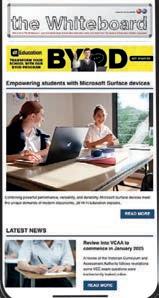






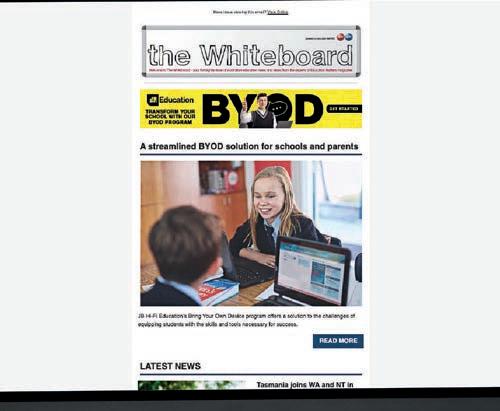
































Devices are just the beginning of your school’s technology journey. It’s the services around them that make a technology program work seamlessly.


That is why, JB Hi-Fi Education offers a comprehensive range of services designed to support schools through the full device cycle.



Our education services for devices include:
Device Managed Services
Deployment
Device care

End of life services







Talk to our team today.




